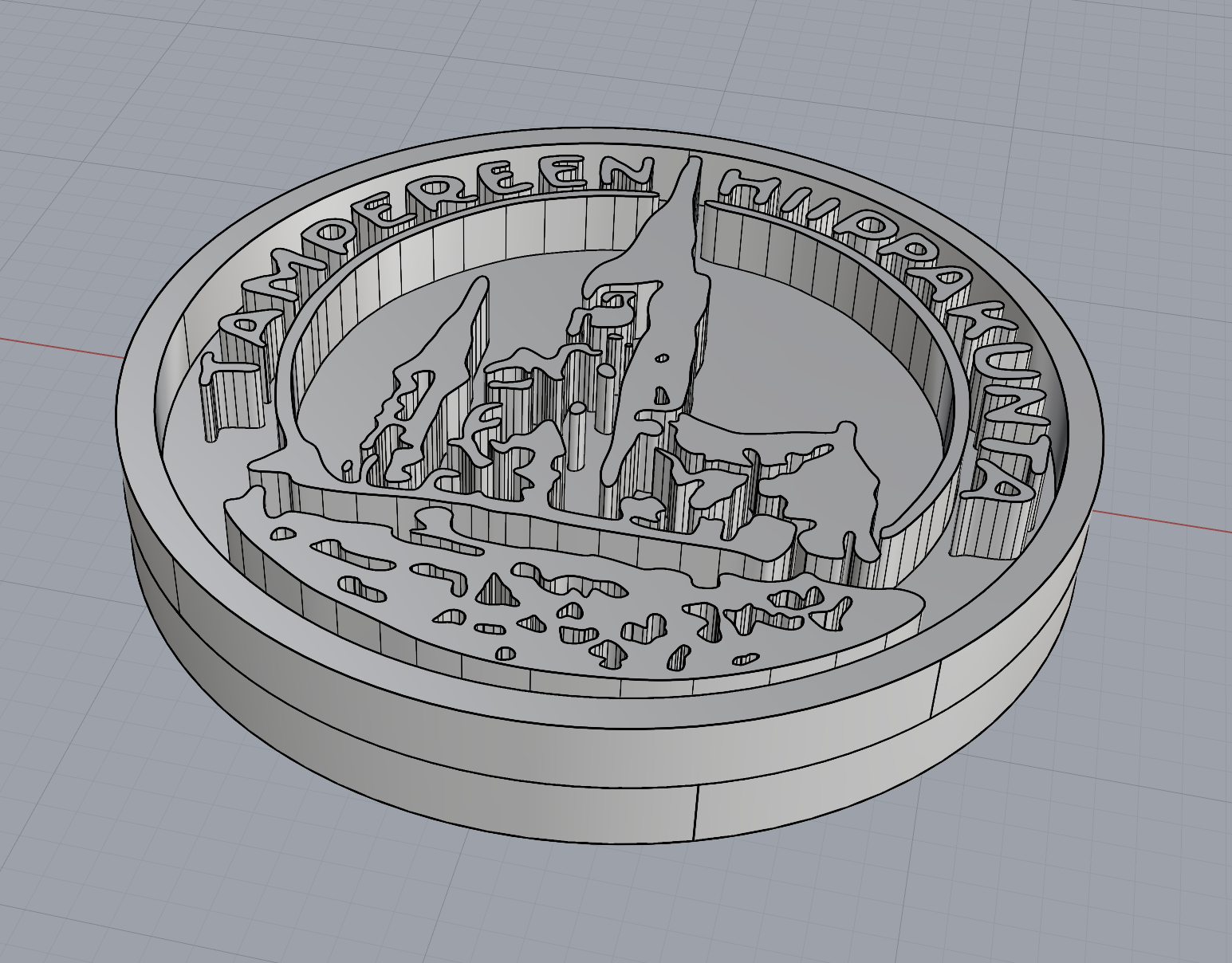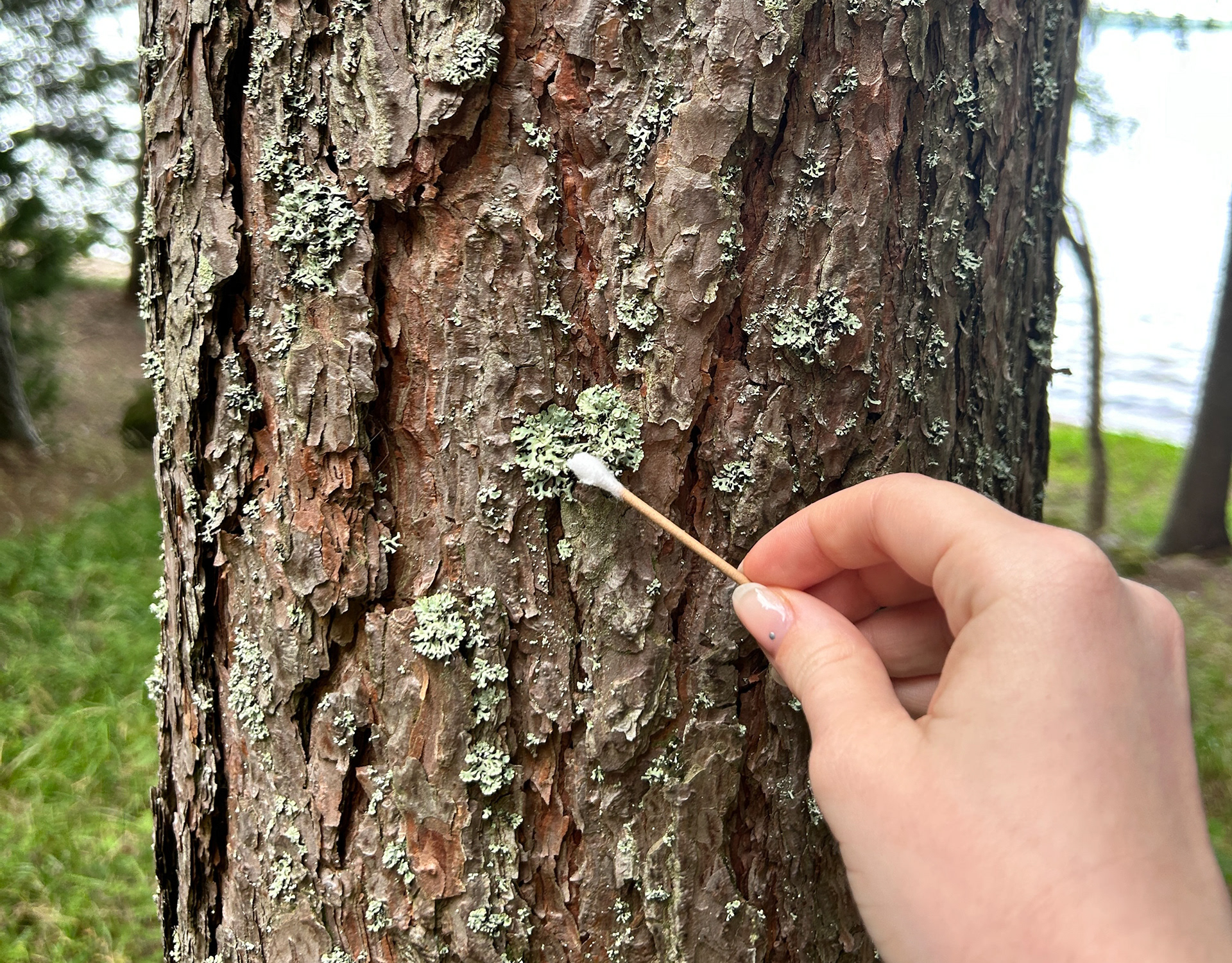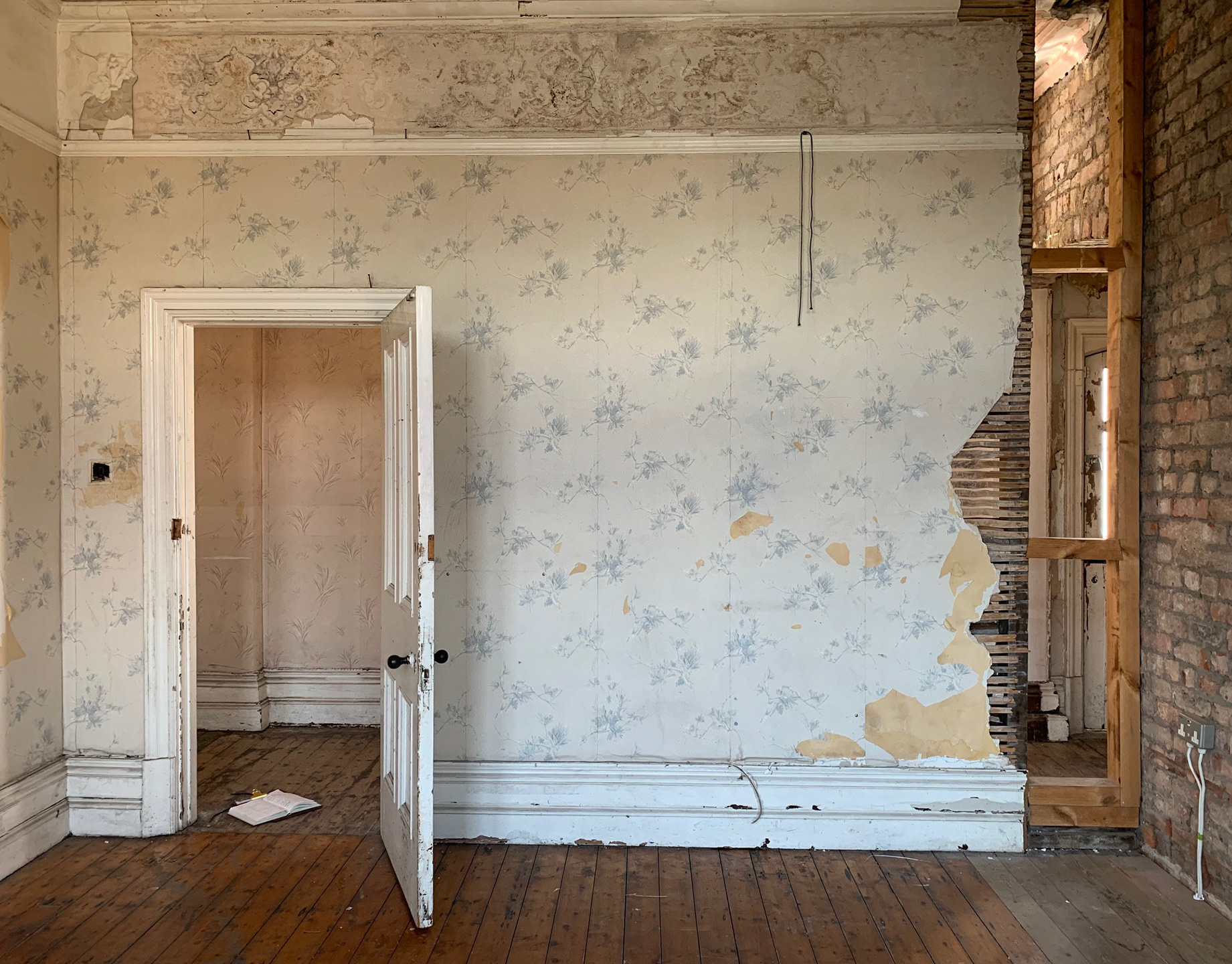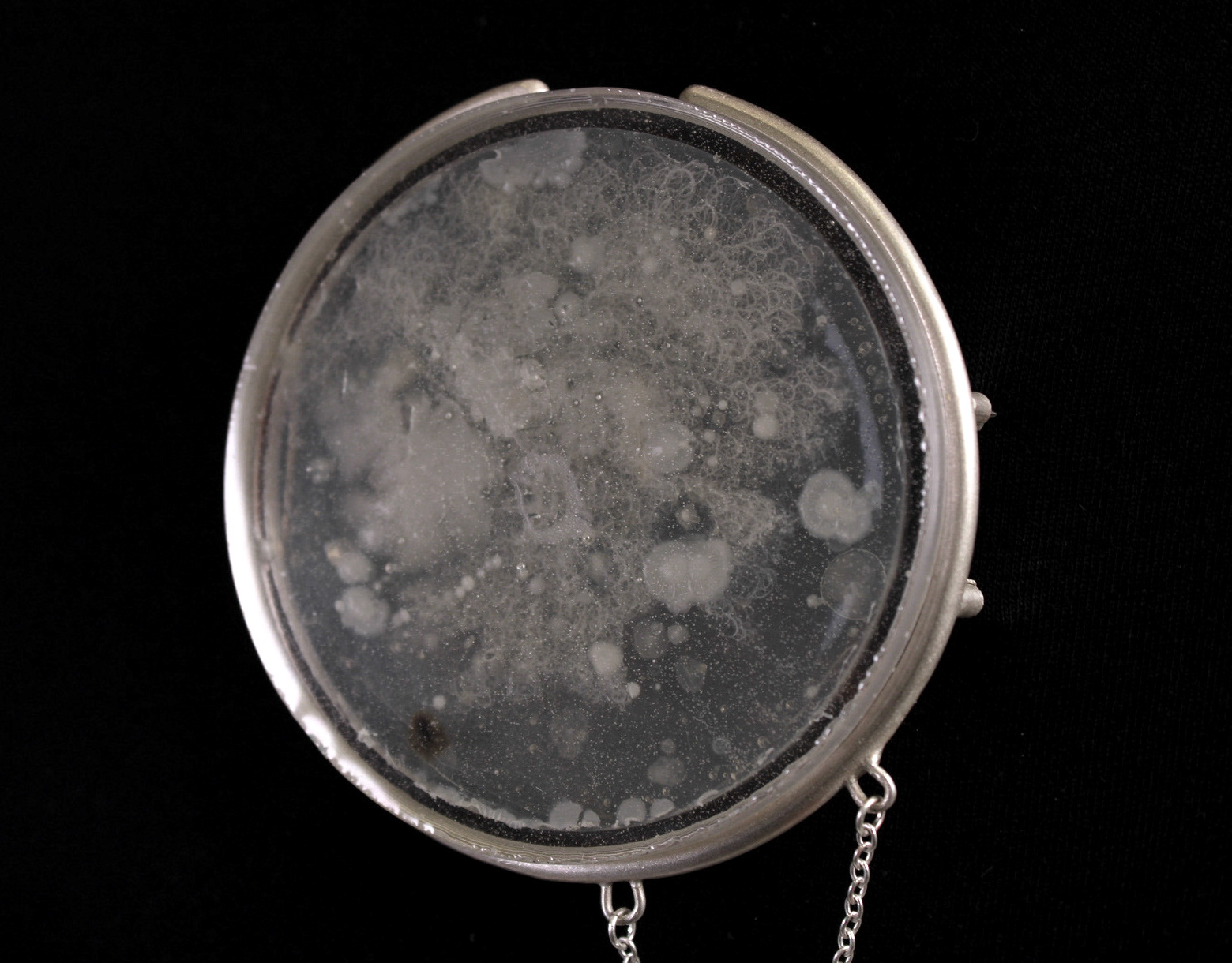Tutorial Feedback
21st October 2024
In my tutorial with Geoff, we discussed how my work can develop further. The key takeaway was to stop limiting myself in terms of design size and to embrace a larger scale. One way this could be done is through the use of the Petri dishes.
Previously I have been trying to use as much bacteria as possible in my bacteria stones, however, after reflecting back on how they look, especially with the silver rectangular pendant made this year, you cannot exactly tell that it is bacteria in the resin.
Geoff suggested that I embrace using the entire dish, as the empty space helps enforce this idea of the bacteria being suspended in time, and confidently shows the material I am using.
While I often feel overwhelmed by creating larger pieces, I realise that using the whole dish could be the best path forward. It preserves the natural, intricate colonies without disrupting their fragility, emphasising the bacteria’s natural structure. As well as that, I am used to using these dishes, and so the idea of using them is not as daunting as using a scale that I am completely unfamiliar with.
I was worried about these bigger pieces not being wearable, however, Geoff suggested that I make a modular piece that can have pieces taken apart and worn separately, which I like the idea of more as this then challenges my technical skills as well.
Finally, Geoff recommended that I move away from instinctively using bezel settings, as they block light and don’t showcase the bacteria in the best way. While I’ve relied on this setting style to practice my technical skills, I've realised that it is time to experiment with settings that allow more light through the resin, highlighting the bacteria better.
Moving forward I would like to test different stone setting techniques that can be used with the petri dishes, as well as testing the idea of using a modular jewellery concept.
After the tutorial, I quickly sketched out a few ideas that I had, so I could refer back to them if I did end up deciding to test them.
Sonja Bäumel
23rd October 2024
I have used this artist in DC3
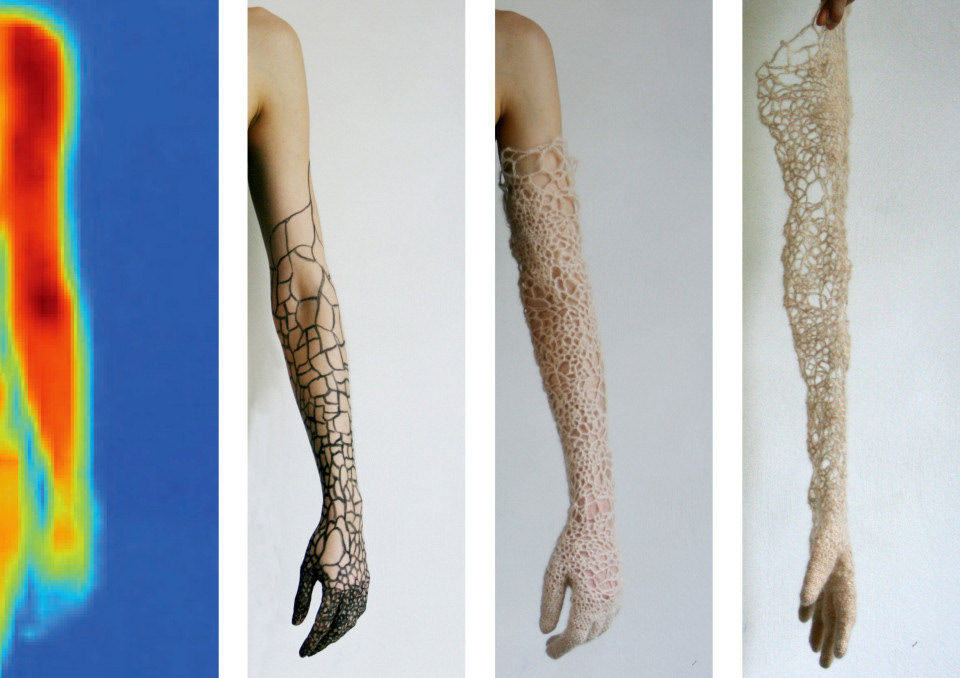
Crocheted Membranes (2008/2009)
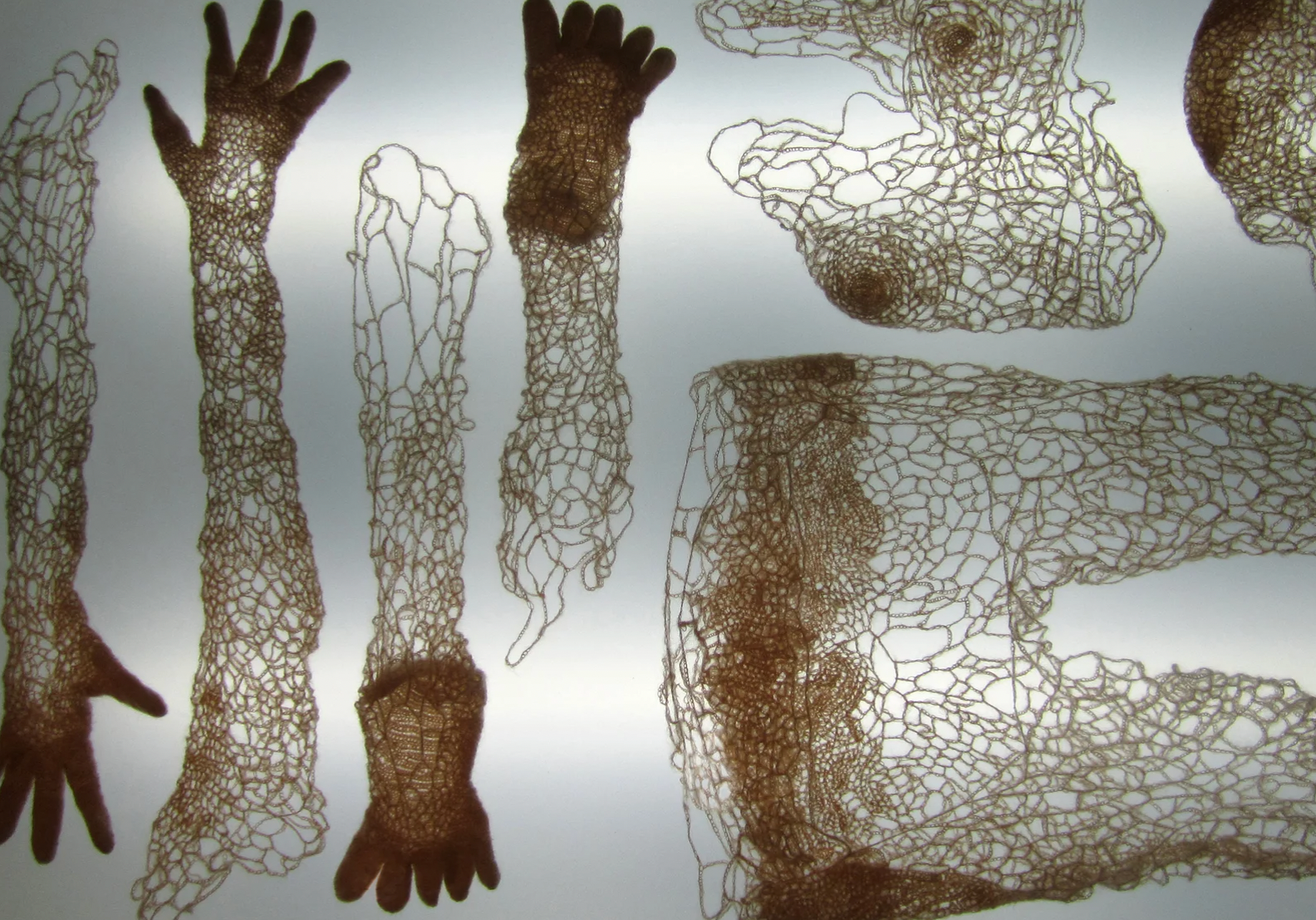
Crocheted Membranes (2008/2009)

Textured Self (2011)
From my tutorial feedback, I decided to look at artists who work with bacteria, to see how other practitioners implement the material into their work.
Sonja Bäumel is an Austrian “artist and art educator” who investigates “the living and evolving perception of what bodies are made from” (Bäumel, 2023, para. 1). Her work connects art, biology, and fashion, focusing on the invisible bacterial ecosystems of the human body. By using bacteria as a medium, she allows the viewers to encounter with “invisible and intangible beings” (Bäumel, 2023, para. 2), cultivating these ecosystems to make the invisible visible. Bäumel’s practice highlights bacteria as vital collaborators in understanding our relationship with our bodies and the environment around us.
Her piece Crocheted Membrane, focused on heat mapping the body, and researching where the body was the most vulnerable. She then created a series of crocheted wearables, where the more dense areas were where the body had lost the most heat.
What I find fascinating about Bäumel's work is that she uses bacteria as the main material in many of her works, as seen in Textured Self. I feel as if I need to lose control with my work and not rely on traditional jewellery techniques to convey the meaning of my work. While I still want to include these techniques, I need to think about why I am including them, and not just include them so I can practice using certain techniques. I need to put my focus into the bacteria and potentially work with this material more, experimenting with different techniques, and potentially even going back to my ideas of dying the agar, but this time with pigments, as well as investigating the CAD and silicone ideas above.
She uses bacteria to show the extension of the body, how can I relate this to Unit X and the extension of the heirlooms / sentimental jewellery pieces?
Bäumel, S. (2023a) bio, sonja bäumel. Available at: https://www.sonjabaeumel.at/bio/ (Accessed: 23 October 2024).
Project Development
26th October 2024
After completing the beta project, I gained a clearer sense of what I wanted to create. As previously mentioned, my focus would be on the bacteria found on heirlooms or sentimental jewellery, using bacterial cultures and jewellery-making techniques to convey the unique stories behind these pieces.
I chose to begin this exploration with my own family’s sentimental jewellery. This allowed me to decide whether to expand on this specific piece, explore other family items, or shift toward using jewellery from other people, rather than pieces I already knew.
Silver Bangle
One of the most sentimental pieces of jewellery to me is my late grandmother's silver bangle.
After a robbery at my grandparent's house, this is one of the few pieces of my grandmother's jewellery that I have left, a hand-engraved silver bangle from Finland.
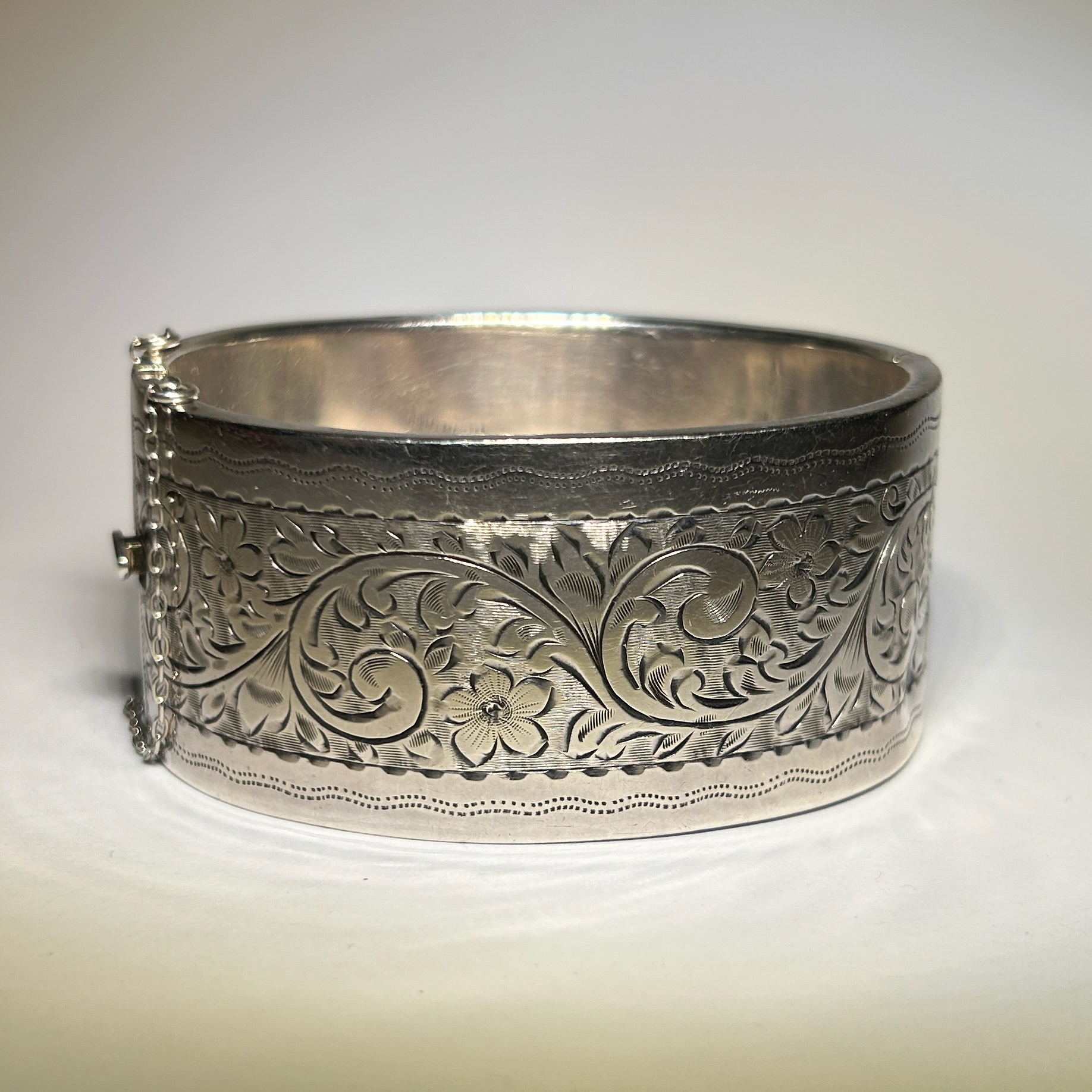
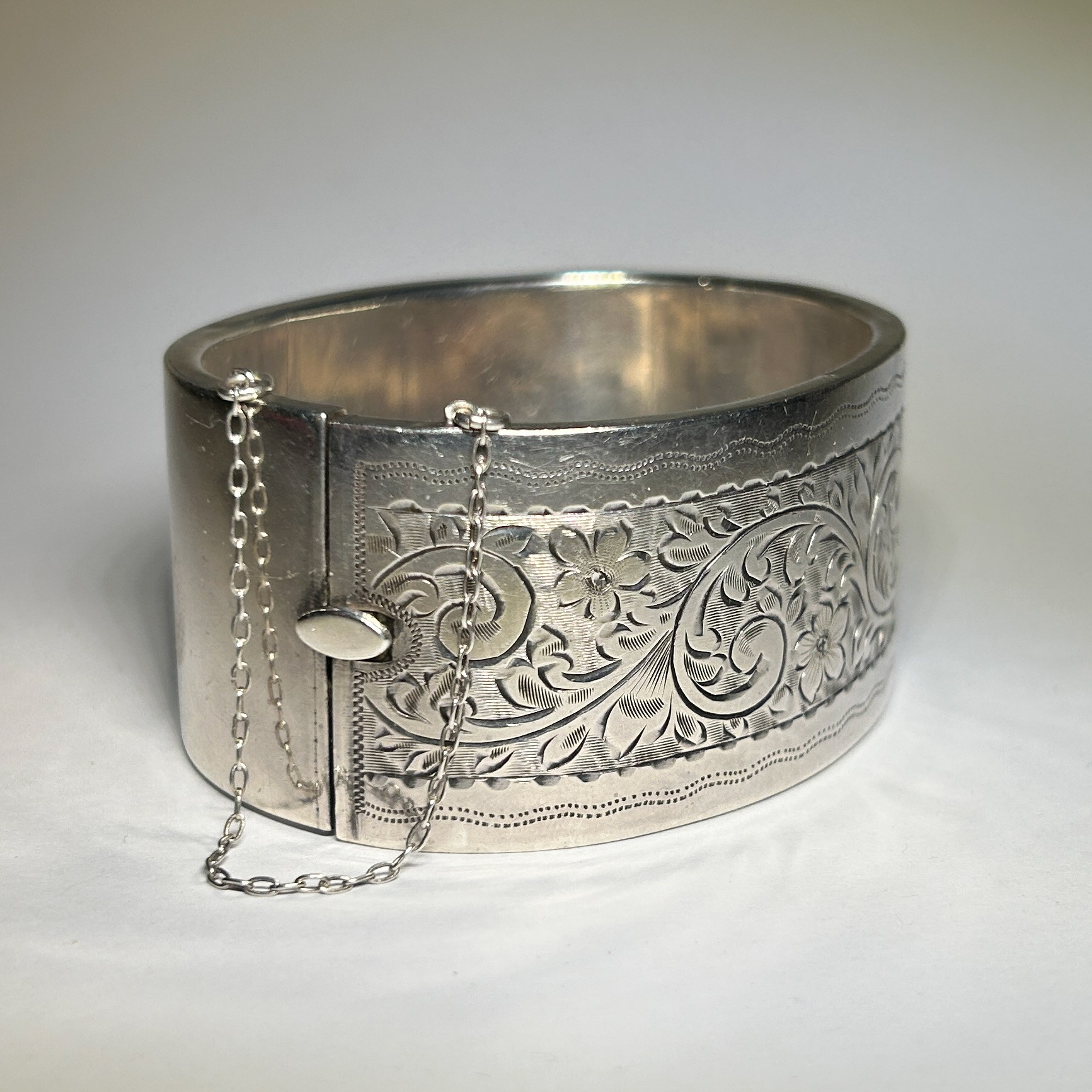
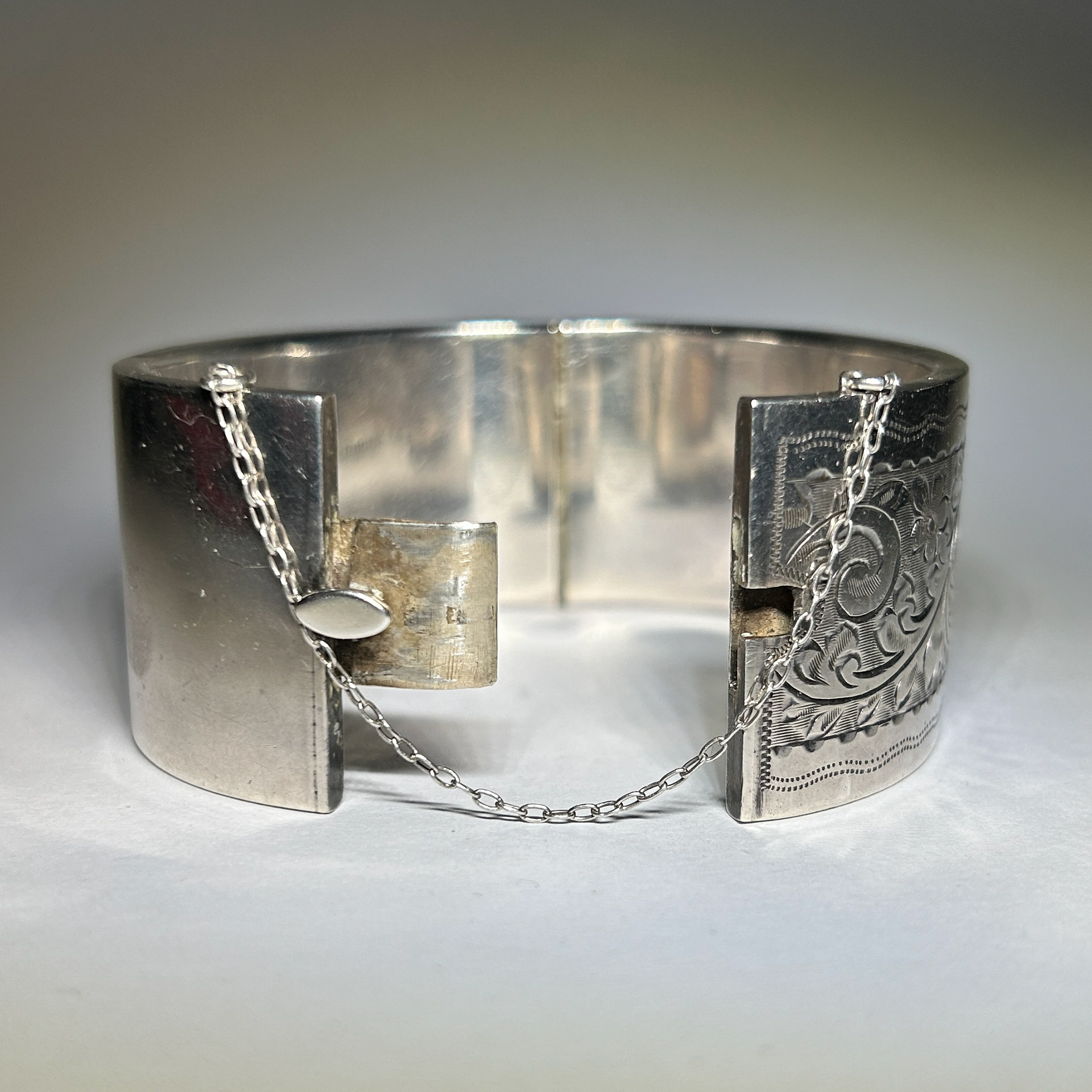
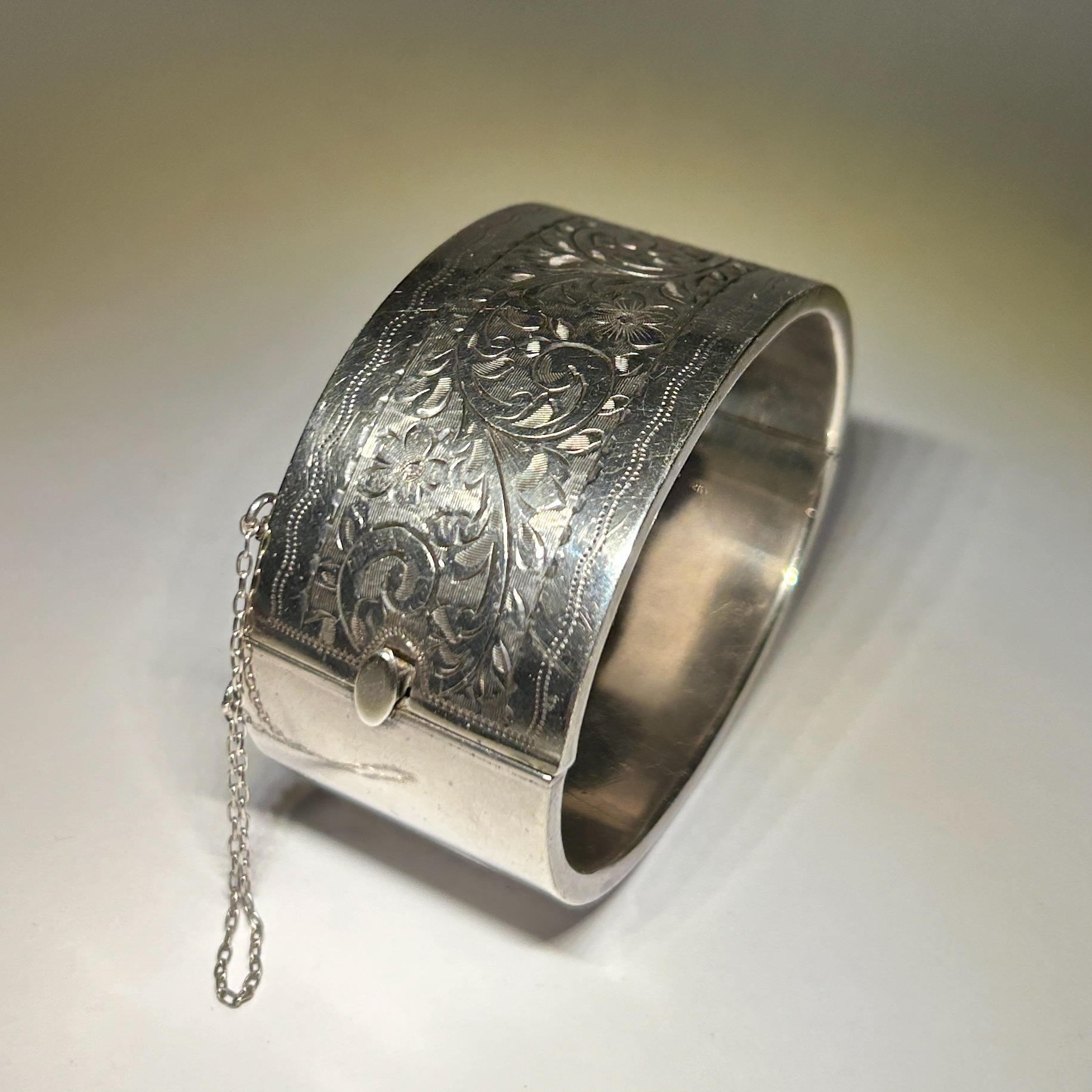

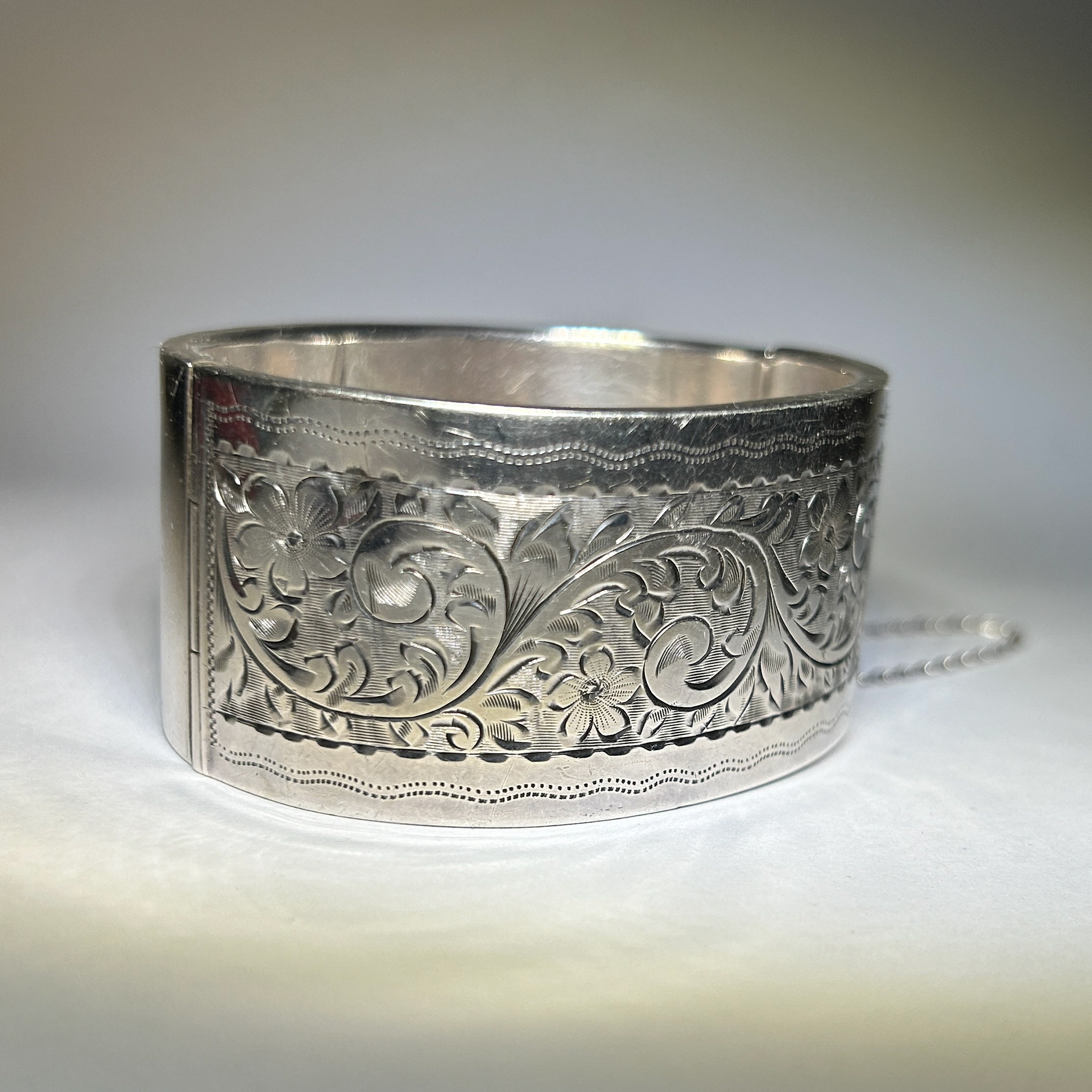
I have written down everything I know about this bangle and the stories behind it.
The bagle is hand-engraved solid 925 silver, given to my grandmother by her parents as a graduation gift in either 1954 or 1955.
This was a very luxurious item for the family to buy as they did not make much money from the Finnish farm they owned.
The bangle was likely bought from Tampere, the closest city to where the family lived, or perhaps even Helsinki.
I questioned whether I wanted to use ideas of regeneration in my making, remaking the item from bacteria and adding other elements from the stories and history of the object. However, I felt as if this might be quite limiting in terms of design ideas, especially since I was hoping to locate a pair of cufflinks that have been passed down in my family.
Cufflinks

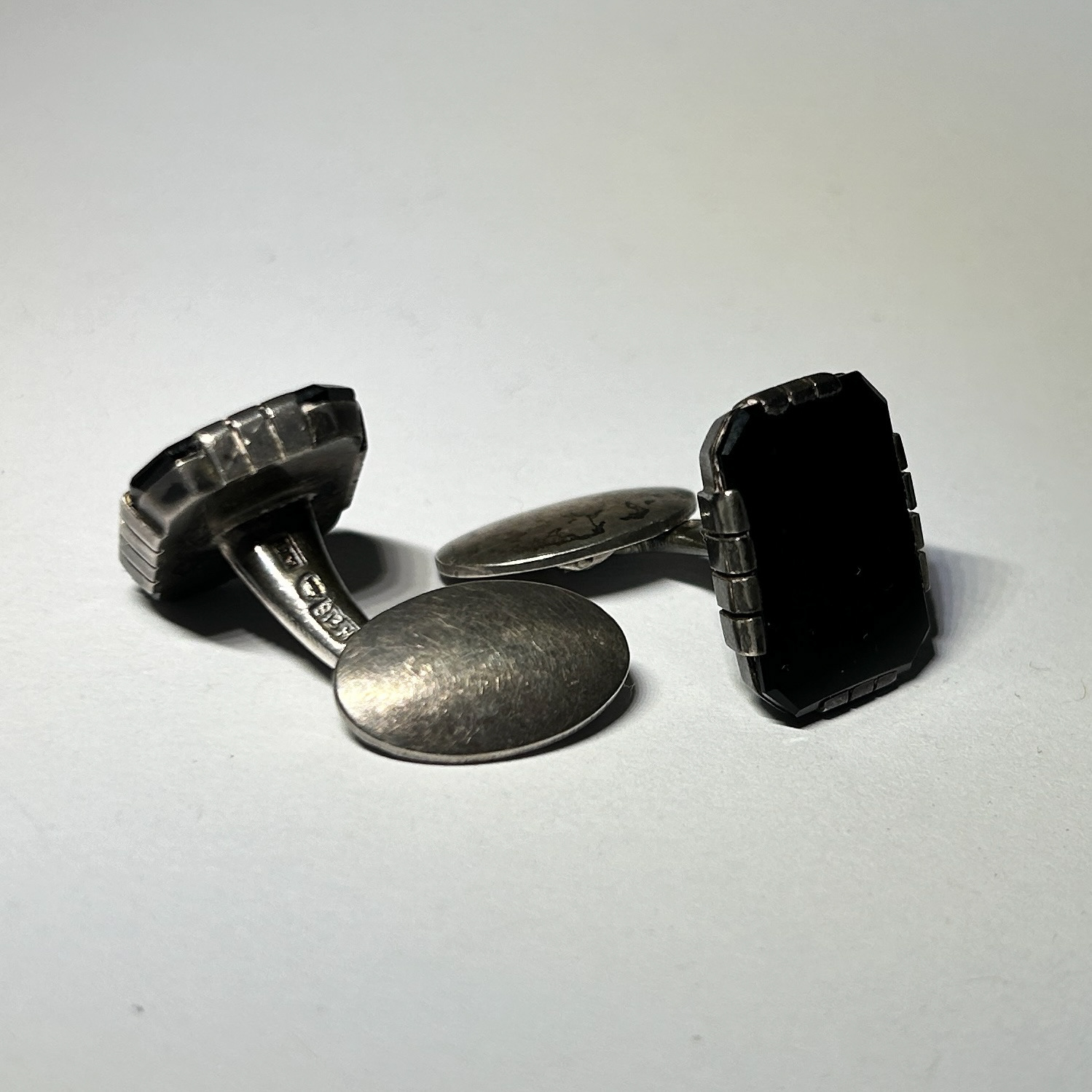

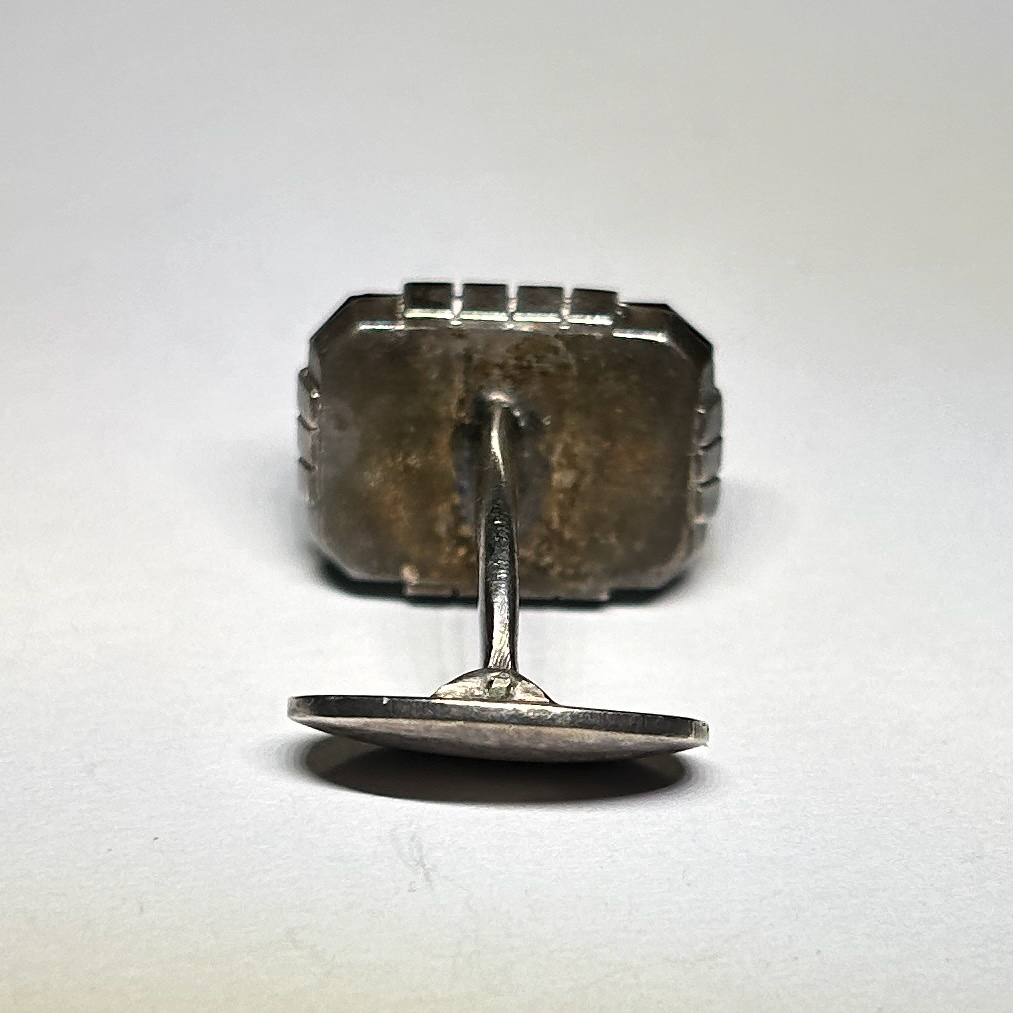

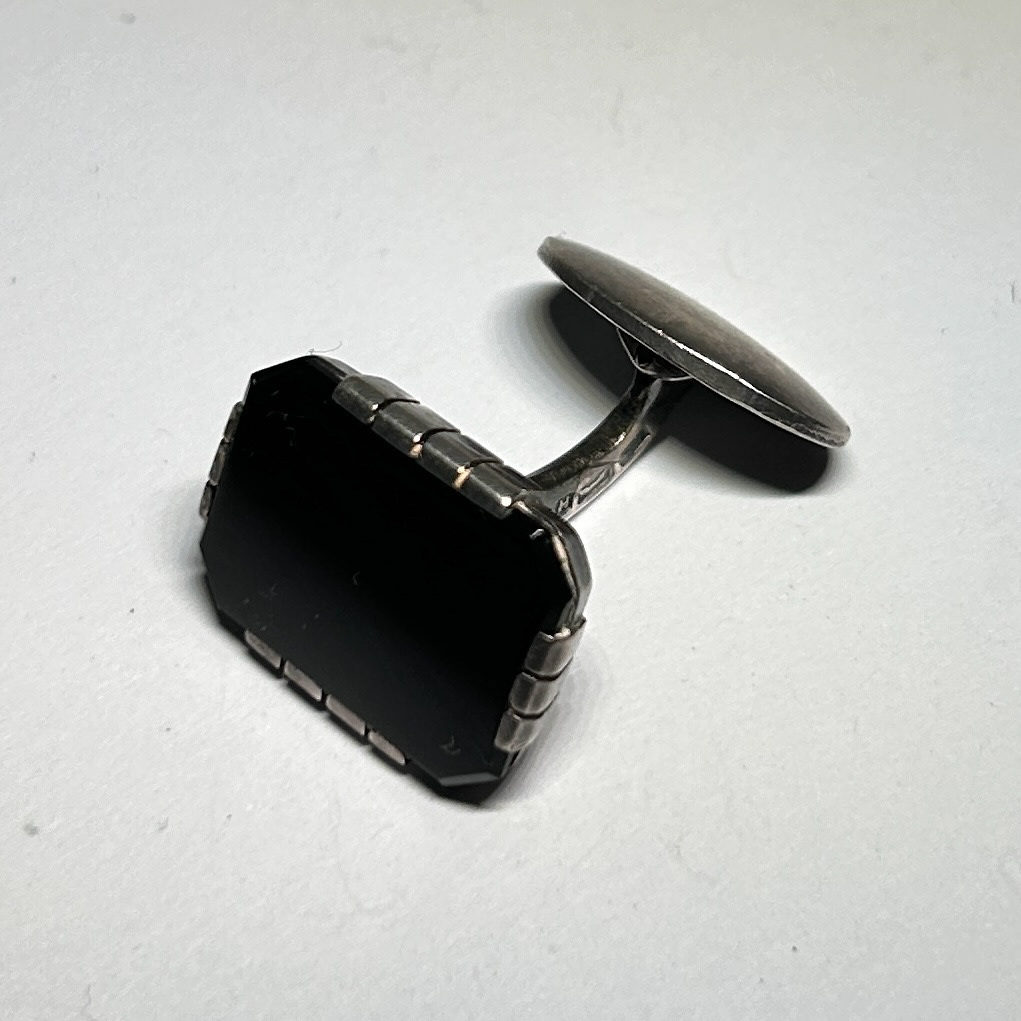
I also wrote down the information I knew about a set of cufflinks, given to my grandad from my grandmother as a wedding present. She bought these in Tampere a few days before their wedding and they were then worn by my grandad.
My grandad then lent these cufflinks to my dad (his son-in-law) when he was marrying my mum (his daughter).
Hallmarks
4th November 2024
On the cufflinks, the hallmarks were still fairly clear. I decided to research these hallmarks to try and find out more about the cufflinks.
Project Development
5th November 2024
Looking back at what these artefacts symbolise to me, I have decided to have 2 different themes for my brooches.
I associate the silver bangle with my grandmother's emigration to the UK from Finland and gaining her British citizenship. If it was not for completing the course, she would not have moved to West Kirby and therefore met my Grandad and moved here permanently. It also symbolises this idea of determination and persistence, especially since my grandmother left everything behind her to pursue this career and subsequently start a new life in the UK.
The cufflinks are more about marriage and the joining of different families and backgrounds, with both my grandparents and my parents.
After this, I decided to try and find various documents that support this idea. After visiting my grandad's house, I found the original citizenship documentation from 1967, as well as the marriage certificate from my grandparent's wedding in Finland in 1959. I also found my parents' marriage certificate.

My Grandparent's Marriage Certificate, 1959

Citizenship Letter, 1967
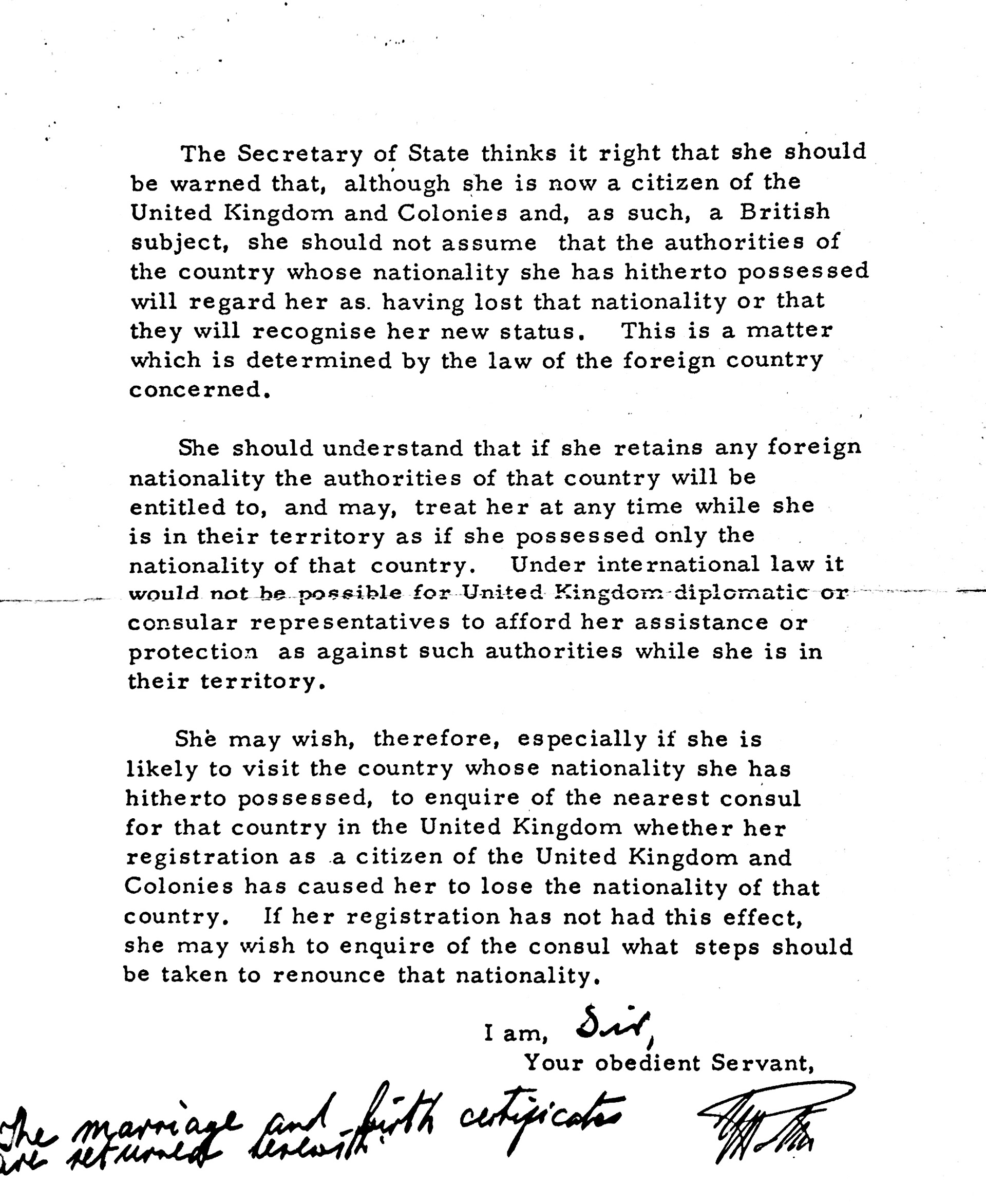
Citizenship Letter, 1967
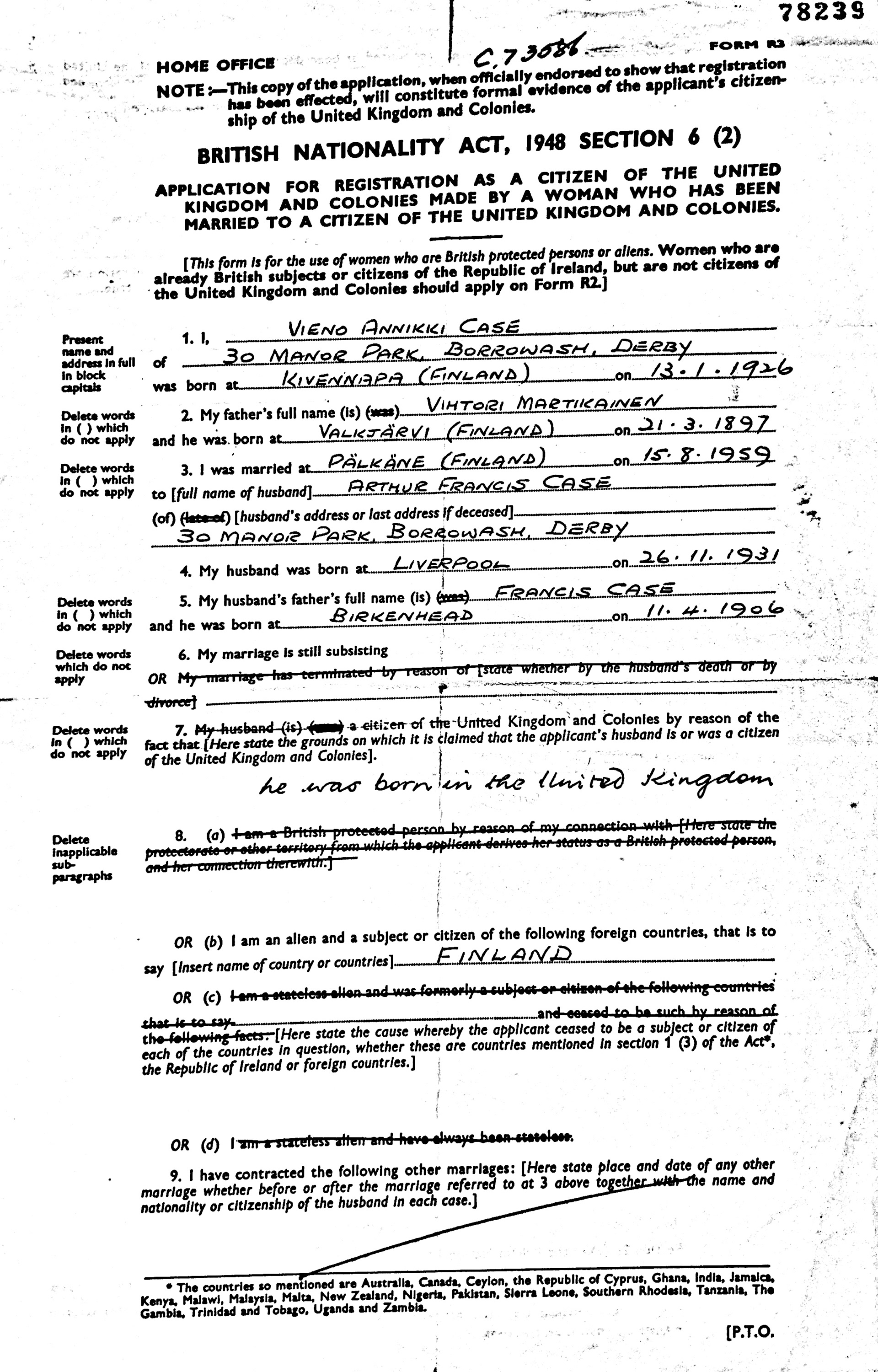
Citizenship Application, 1967
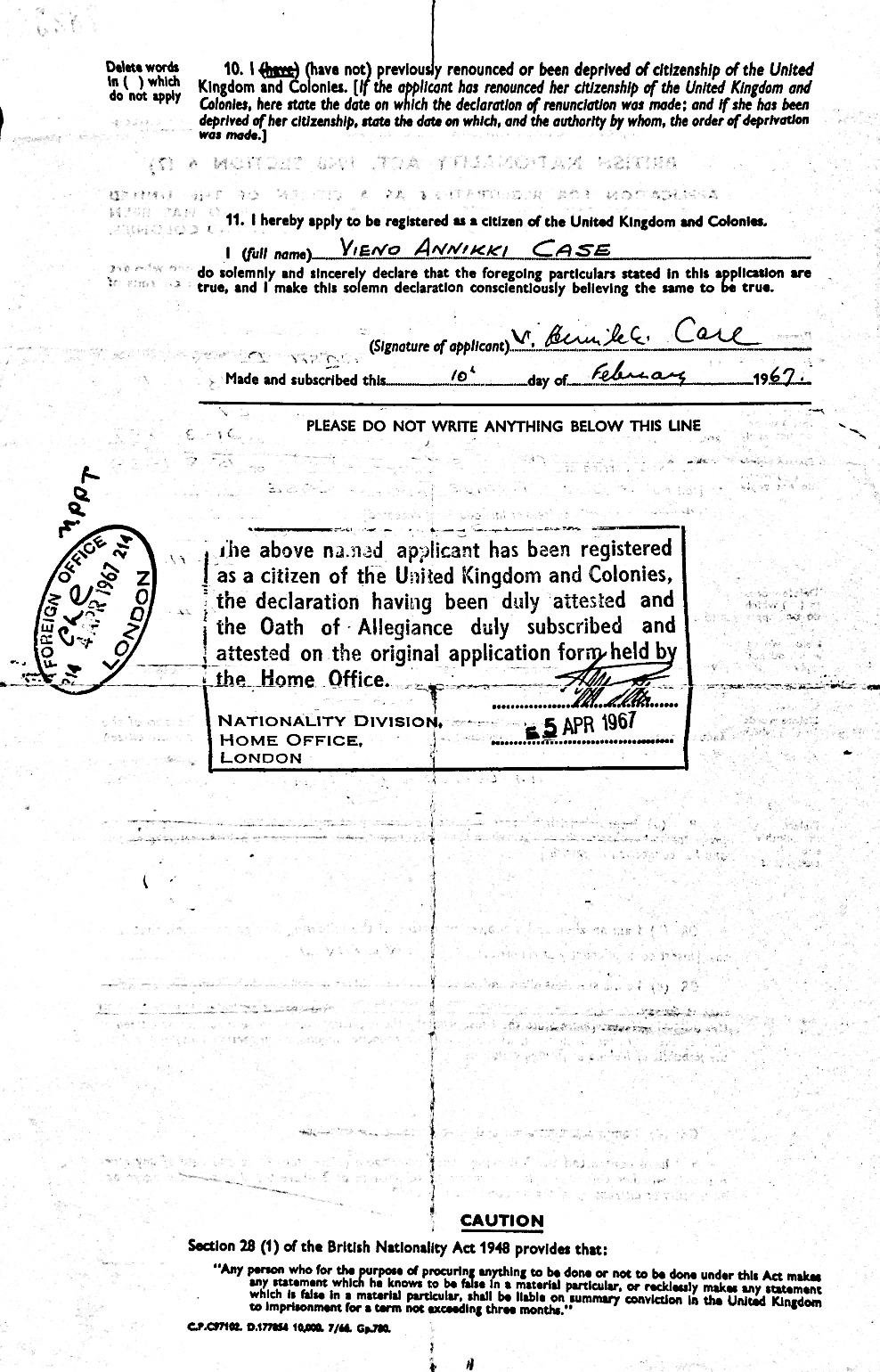
Citizenship Application, 1967
My Parent's Marriage Certificate, 1992
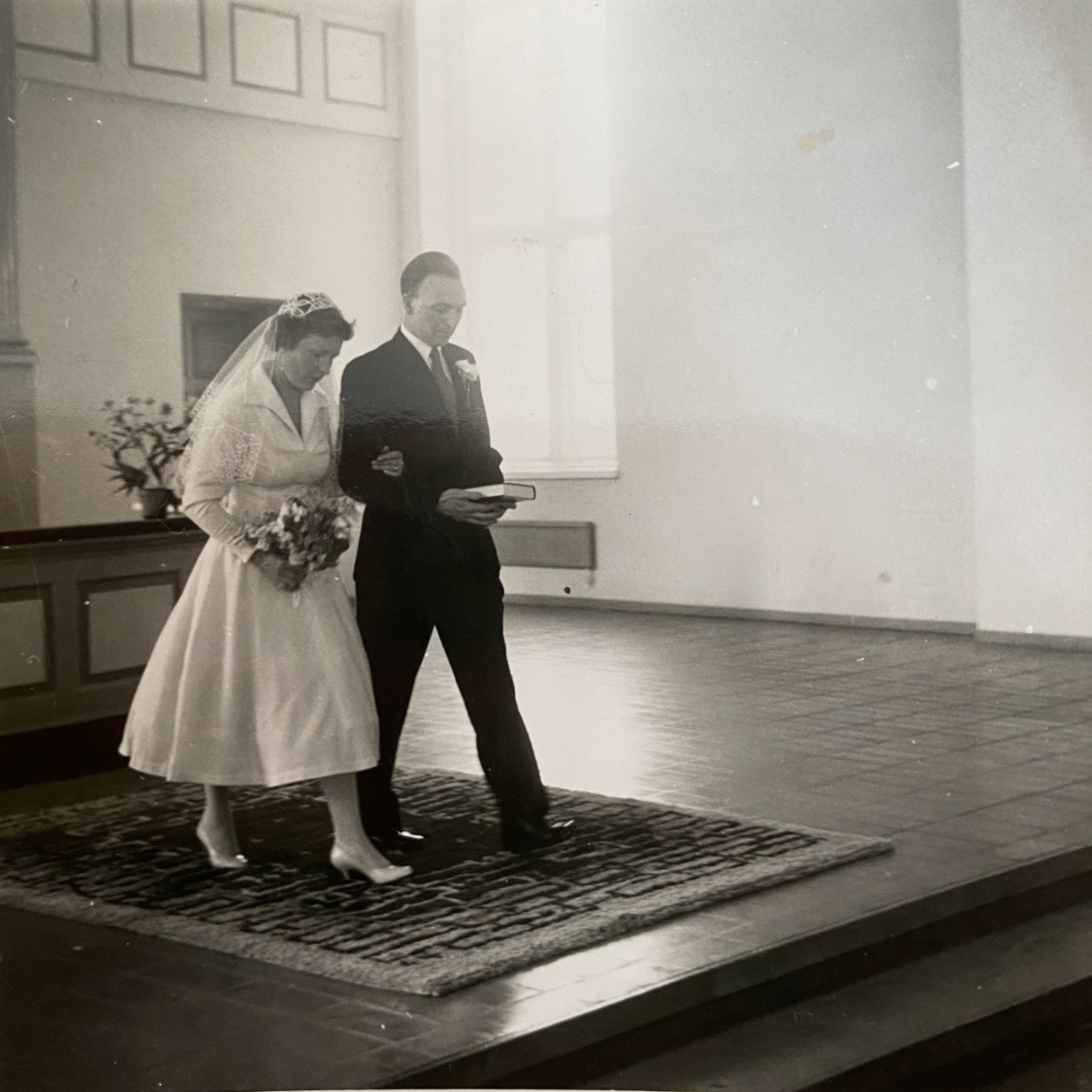
My Gandparents Wedding Day, 15th August 1959

My Gandparents Wedding Day, 15th August 1959

My Parents Wedding Day, 15th August 1992

My Parents Wedding Day, 15th August 1992
Ramon Puig Cuyàs
I decided that I was going to create two brooches with different elements. I was not sure about how I could do this while also keeping the design cohesive and functional. I decided to research Ramon Puig Cuyàs, and his brooch designs.
Ramon Puig Cuyàs is a Spanish jewellery designer from Barcelona. Growing up with the Mediterranean sea on his doorstep has heavily influenced his work, being inspired by the ships on the horizon, and ‘questioning biological diversity’. Cuyàs has a fascination of exploring the world beyond what is visible to him, and so rather than pursuing with a scientific route, he turned to art. This gave him the opportunity to ‘discover, imagine, invent, and transform other kinds of universe’. I am intrigued by this narrative of work, and the use of documentation within his designs.
He often uses geometric and sculptural shapes to build a base for his designs and then layers these with different forms and outlines.



Each of the background shapes is different and have a different design depicted, often with vastly different textures. I have often found that when looking at these brooches, they can be overwhelming at first with so many different elements. However, I have found that breaking down the piece and interrogating each piece, makes it clear that each element is telling a different story. From the architectural brightly coloured pieces to the darker and geometric shapes, each piece highlights a different source of inspiration. Then when these pieces are layered together, create a dynamic and intriguing piece of art. I question how I can use elements of this in my work, and use these ideas of documentation and different elements in my design.
All of these pieces are incredibly technical and have been methodically planned to create a structure. There is very little evidence of pin mechanisms and bezels to hold the pieces in place, creating a brooch that almost looks like it's floating. While I feel as if my skill set is not equipped to make something this technical, I do like the idea of having small prongs or small mechanisms holding the piece together.

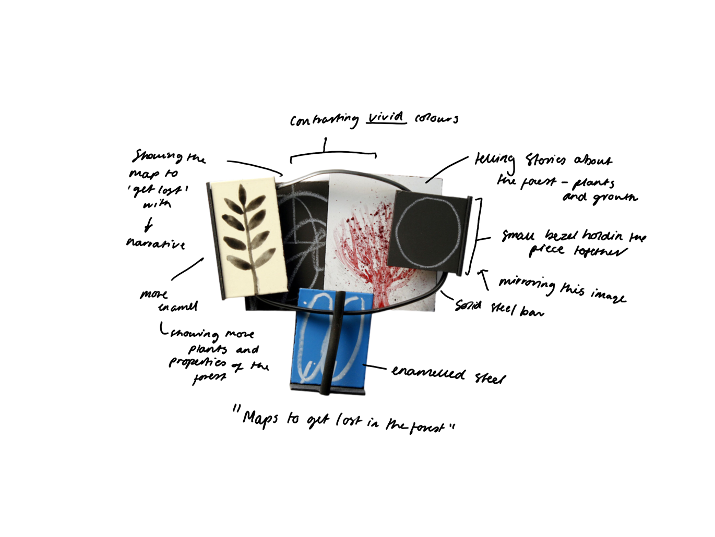
Ramon Puig Cuyàs (no date) Galerie Noel Guyomarc’h. Available at: https://galerienoelguyomarch.com/en/portfolio-item/ramon-puig-cuyas/?v=79cba1185463 (Accessed: 27 October 2024).
Formative Review Feedback
28th October 2024
After my formative review with Geoff, I went through the audio recording and wrote down the points said.
From this feedback, I have decided to look at how I can remove the bacteria from the petri dishes. This way I can have a piece of bacteria that is thinner, easier to work with, and more cost-efficient to cast a setting for. This could also create the opportunity to create larger designs. While I may not necessarily do this within Unit X, I like the idea of knowing the method of how to do this, so I can explore this further in Synthesis and Resolution.
This method of getting the bacteria out of the dish is explored within my 'Making' page.
Also from this, I know that I need to look at different mechanisms for my brooches, and how I can get the bacteria into different settings.
Lillie Tew
5th November 2024
In one of our lectures, we had the opportunity to hear from alumni student Lillie Tew, who shared her experiences and career journey since graduating.
It was incredibly valuable to learn how her degree has taken her from hands-on making to curatorial work, as well as to hear about the residency she completed after graduation.
We also had the chance to receive one-on-one tutorials with her. During my session, I asked for advice about navigating the final year, and she emphasised the importance of being authentic and trusting my instincts. I often struggle with the direction of my practice and have felt overwhelmed, particularly with this Unit X project and its theme. Lillie’s advice to trust my own ideas was reassuring, as these ideas are what fuel my motivation, something I have struggled with this year. It was comforting to hear this from a 3D graduate who has firsthand experience and truly understands what we are going through right now.
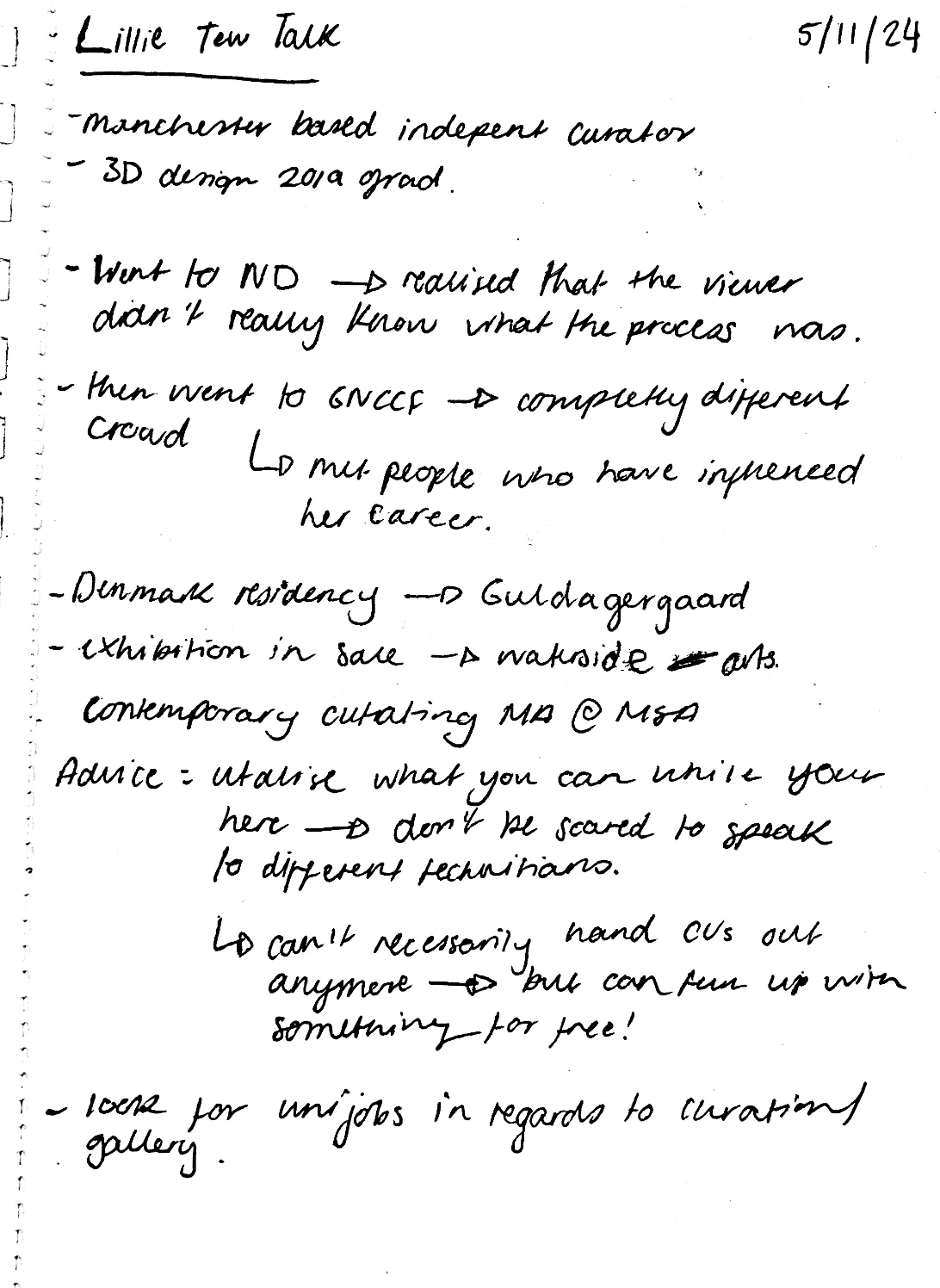
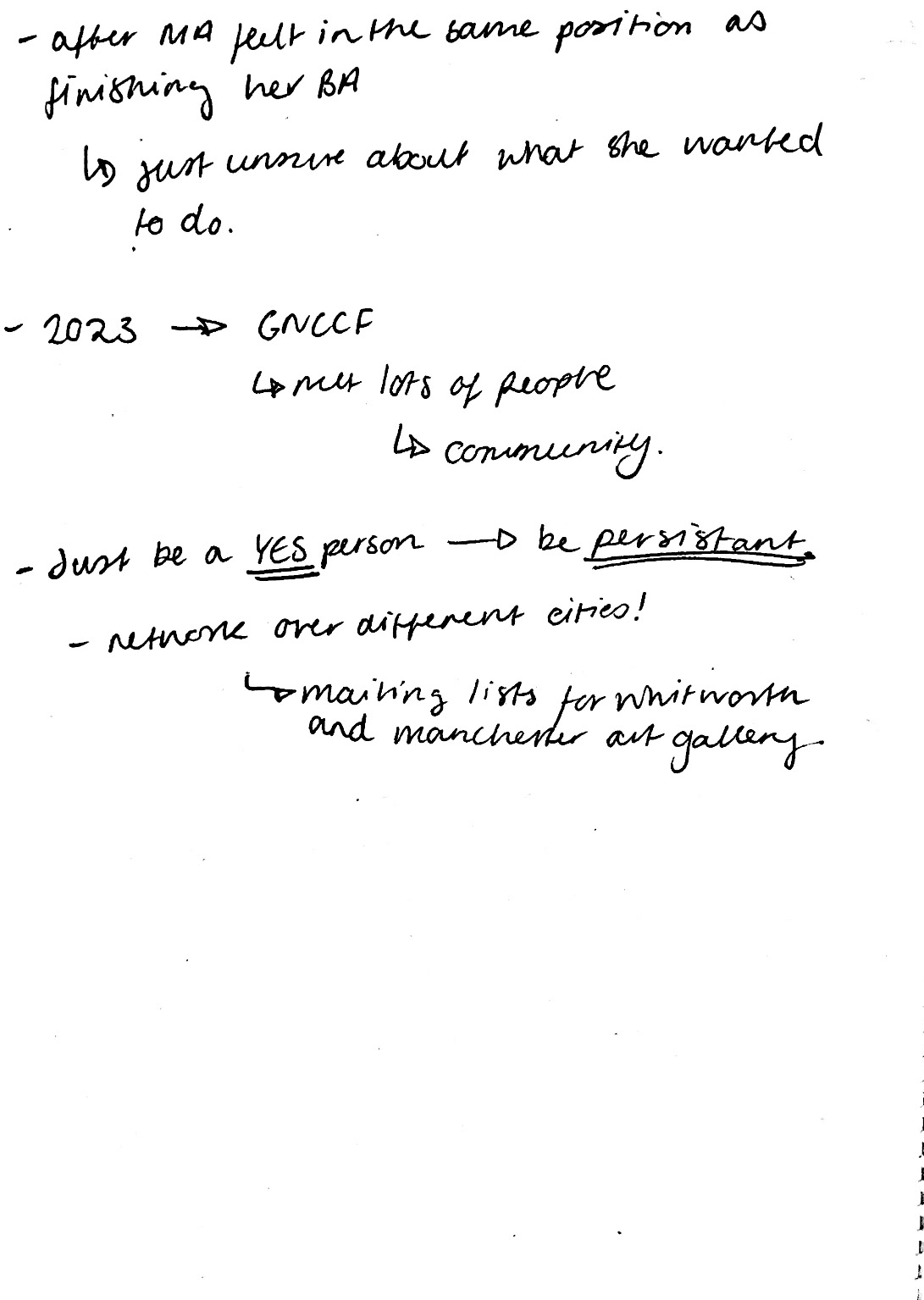

Mark Tutorial
7th November 2024
During my tutorial with Mark, I showed him my wax cast brooch sample.
I explained how the mechanism wasn’t functioning as intended, and he suggested alternative designs to improve its functionality. One of his ideas was to incorporate a small latch that would click securely into place.
What I particularly liked about this suggestion was the potential for a modular design, allowing the wearer to swap out different bacterial samples. This approach would enable me to create multiple swabs, for example, five variations from the same piece of jewellery. Based on my samples from the beta project, I know that even when swabbing the same source, the results can vary, making each iteration unique.
Mark also suggested that I delve more into the medical influence of my designs, and recommended artist Roberta Bernabei as part of my contextual research.
Roberta Bernabei
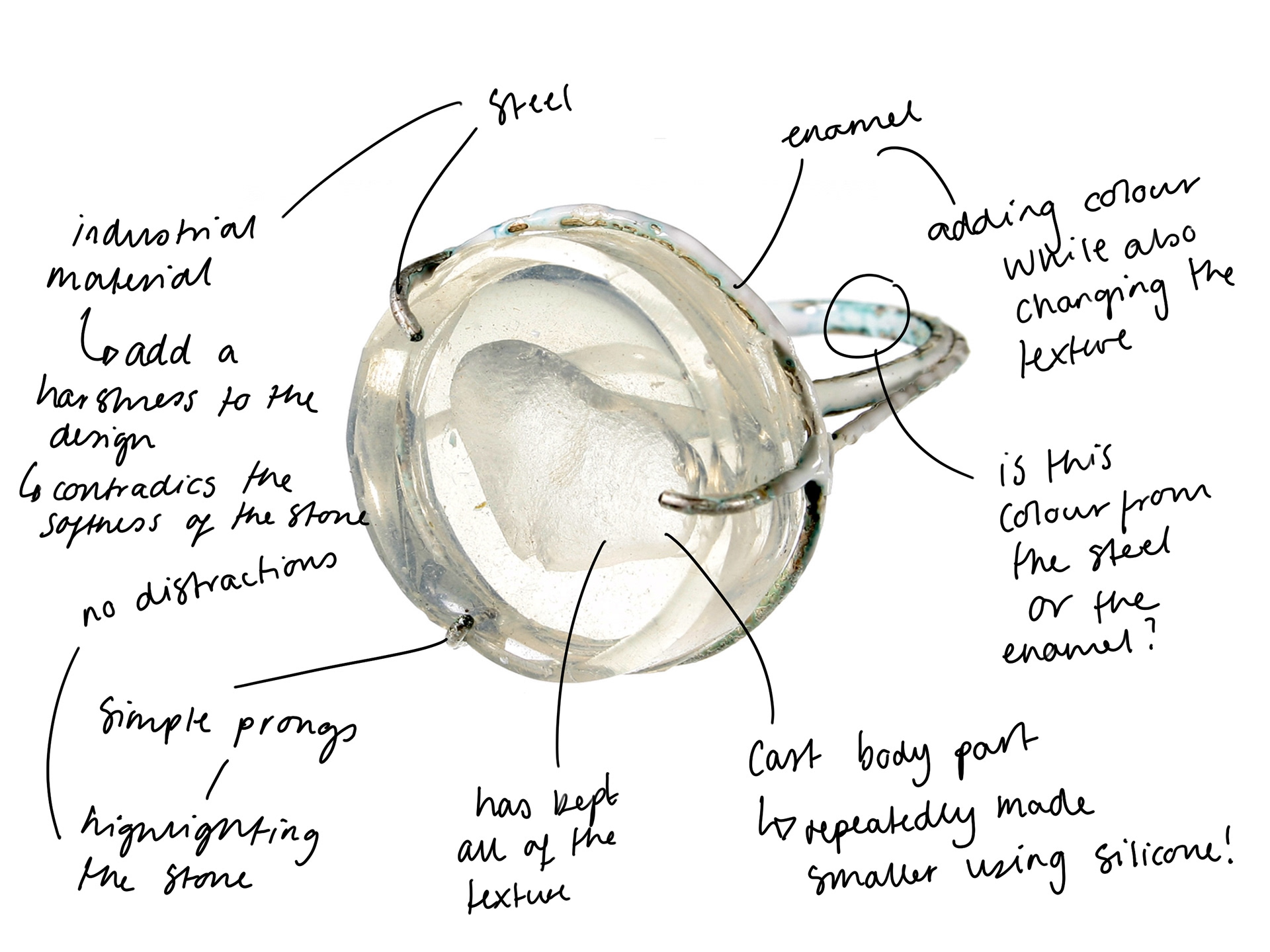
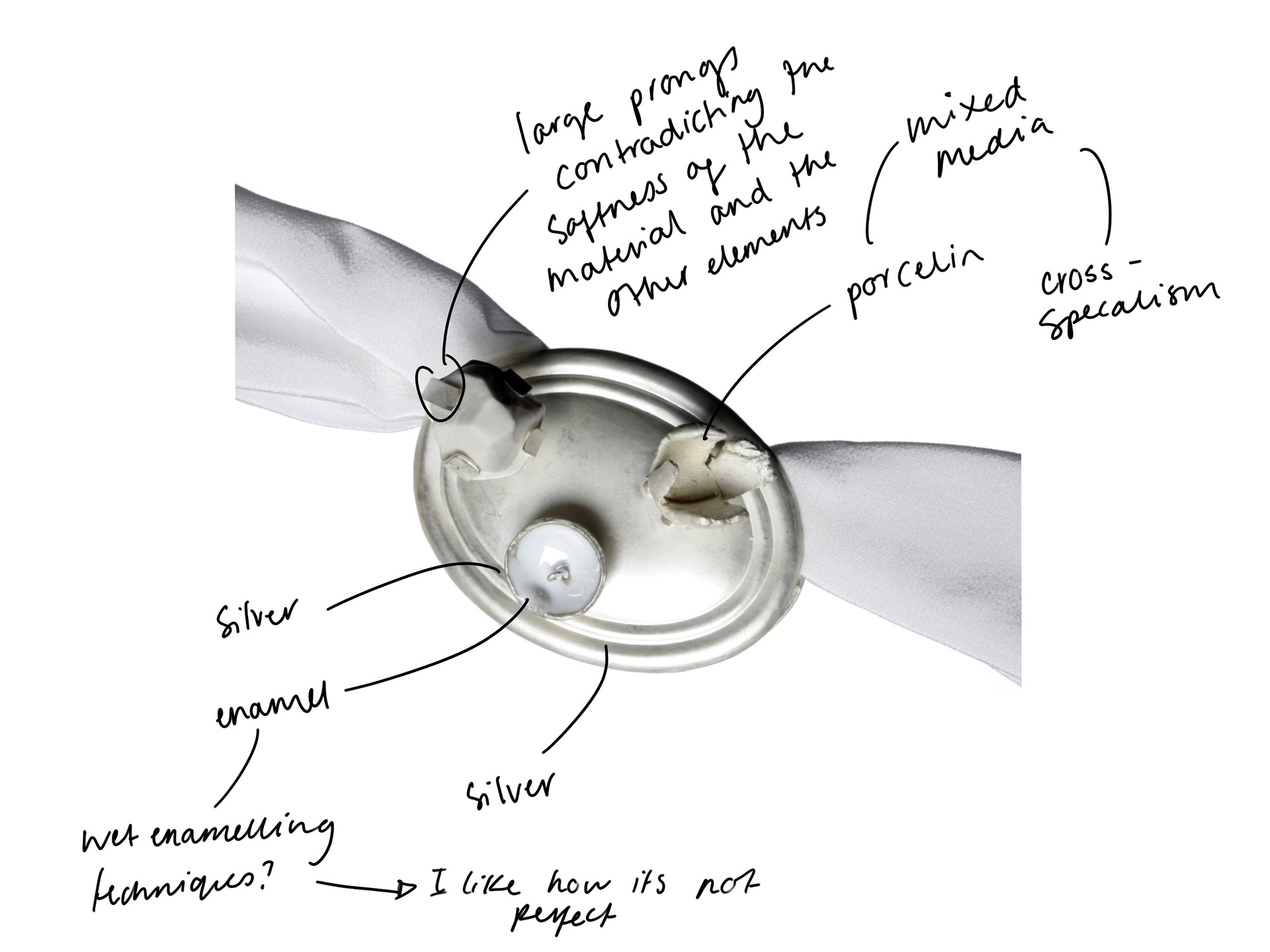
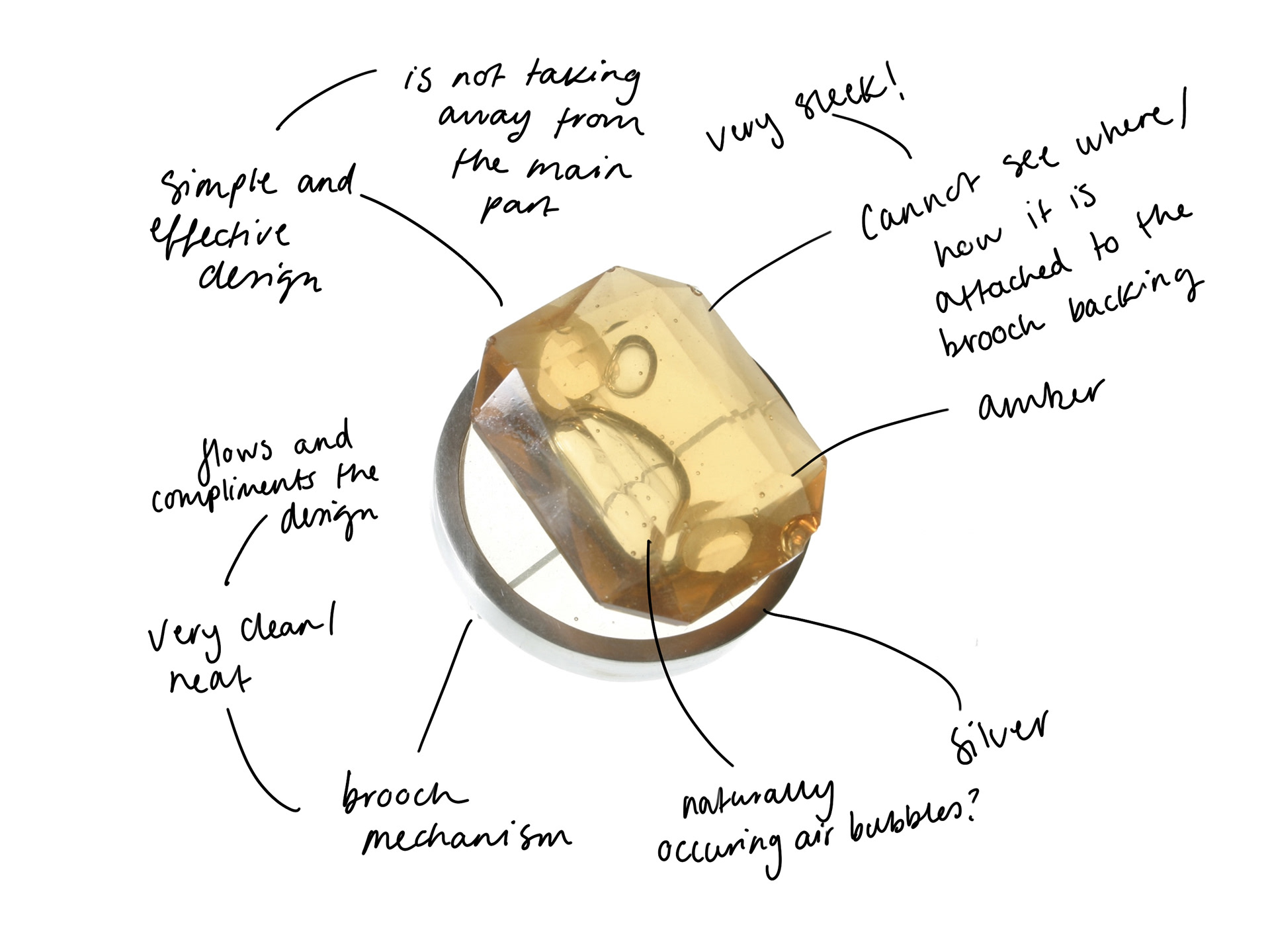
Design Alumi Panel
7th November 2024
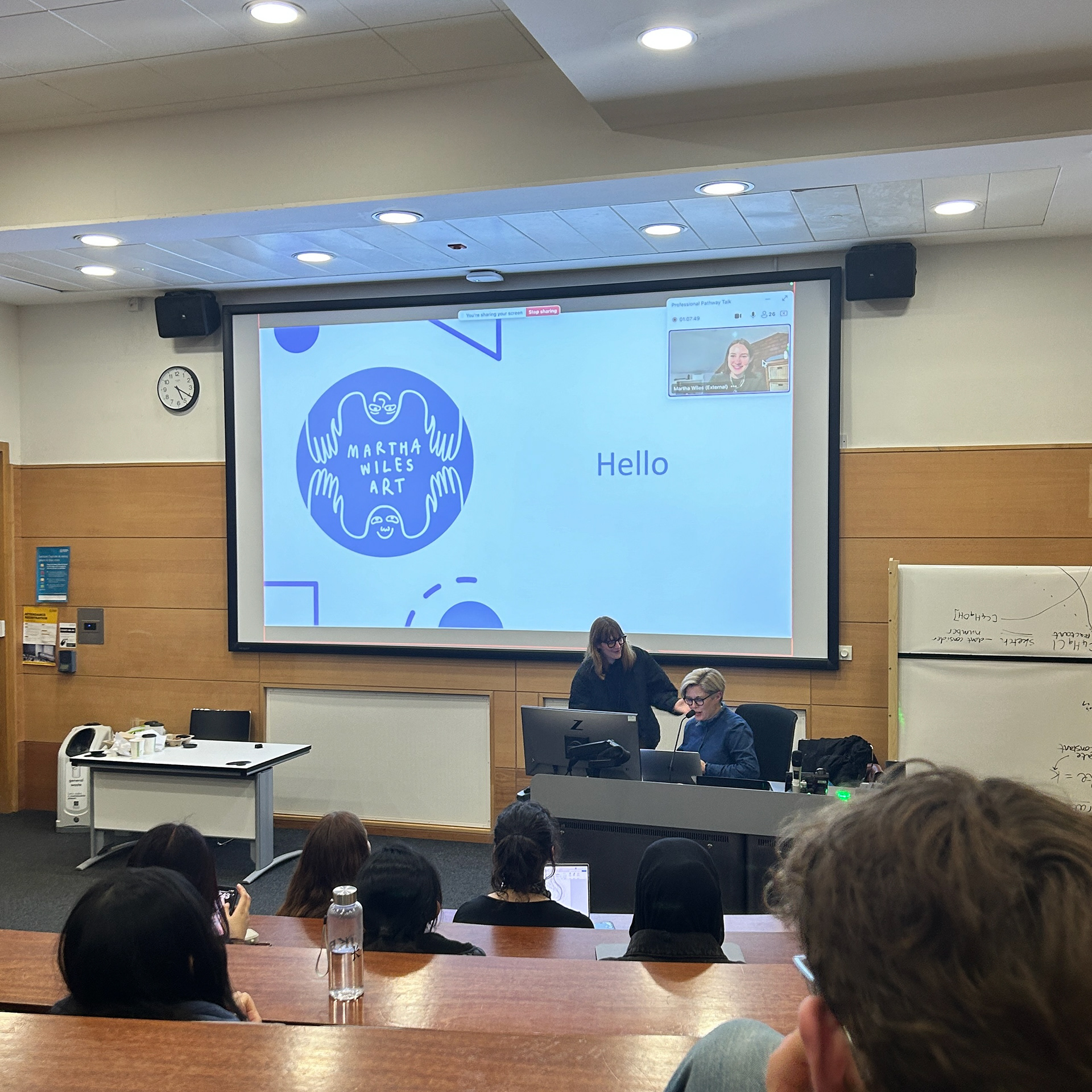

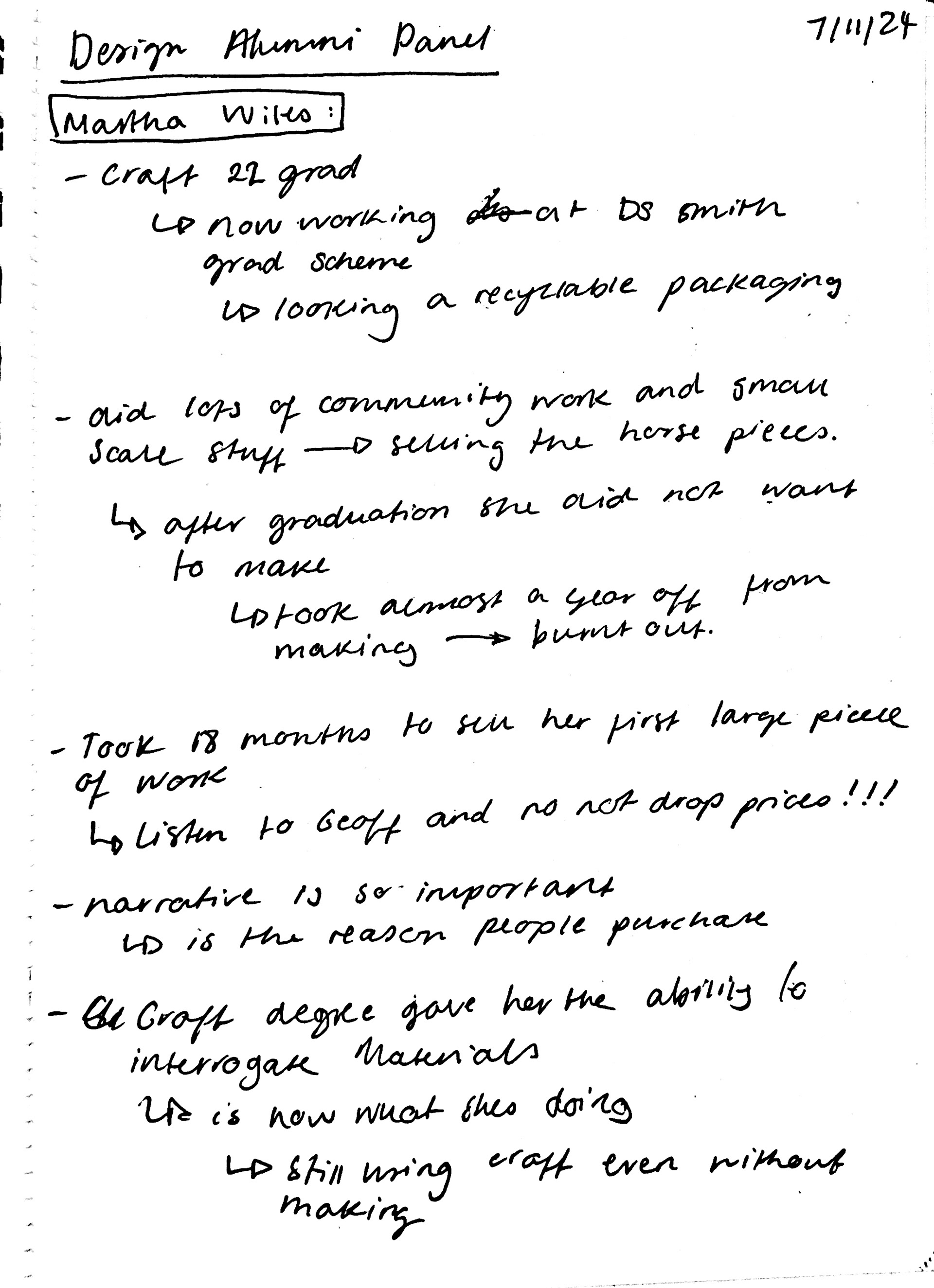

One of the lectures hosted by the Design Futures team featured alumni from six different courses across the design school. Among them was Martha Wiles, a Craft graduate from 2023. She shared her experiences navigating life after graduation, including the challenges she faced with burnout and not wanting to continue making right away. Her advice was not to shy away from reaching out to different people, even if their field of work only slightly overlaps with yours—you never know what opportunities might arise.
Hearing about her own struggles with making after graduation was reassuring, as I am currently questioning my own path. I’m uncertain whether I want to continue with a steady focus on making or take a step back for a while, giving myself a chance to recharge and return with a fresh perspective on where I want to take my career.
Final Design Idea
While creating my final design idea, I had to think carefully about which elements I wanted to incorporate.
To help me visualise this, I created a mind map, compiling all the information and inspiration I had gathered from both my grandmother’s bangle and my grandfather’s cufflinks.
I made notes on how I could represent and showcase these features, such as using the stamps from their wedding certificate as a design element, while also wanting to incorporate traditional jewellery techniques like enamelling and stone setting. These techniques are what drive my practice, I enjoy using these traditional notions of jewellery contrasted with the more modern and unexpected bacterial elements to make my designs, and so this is what I planned to do.
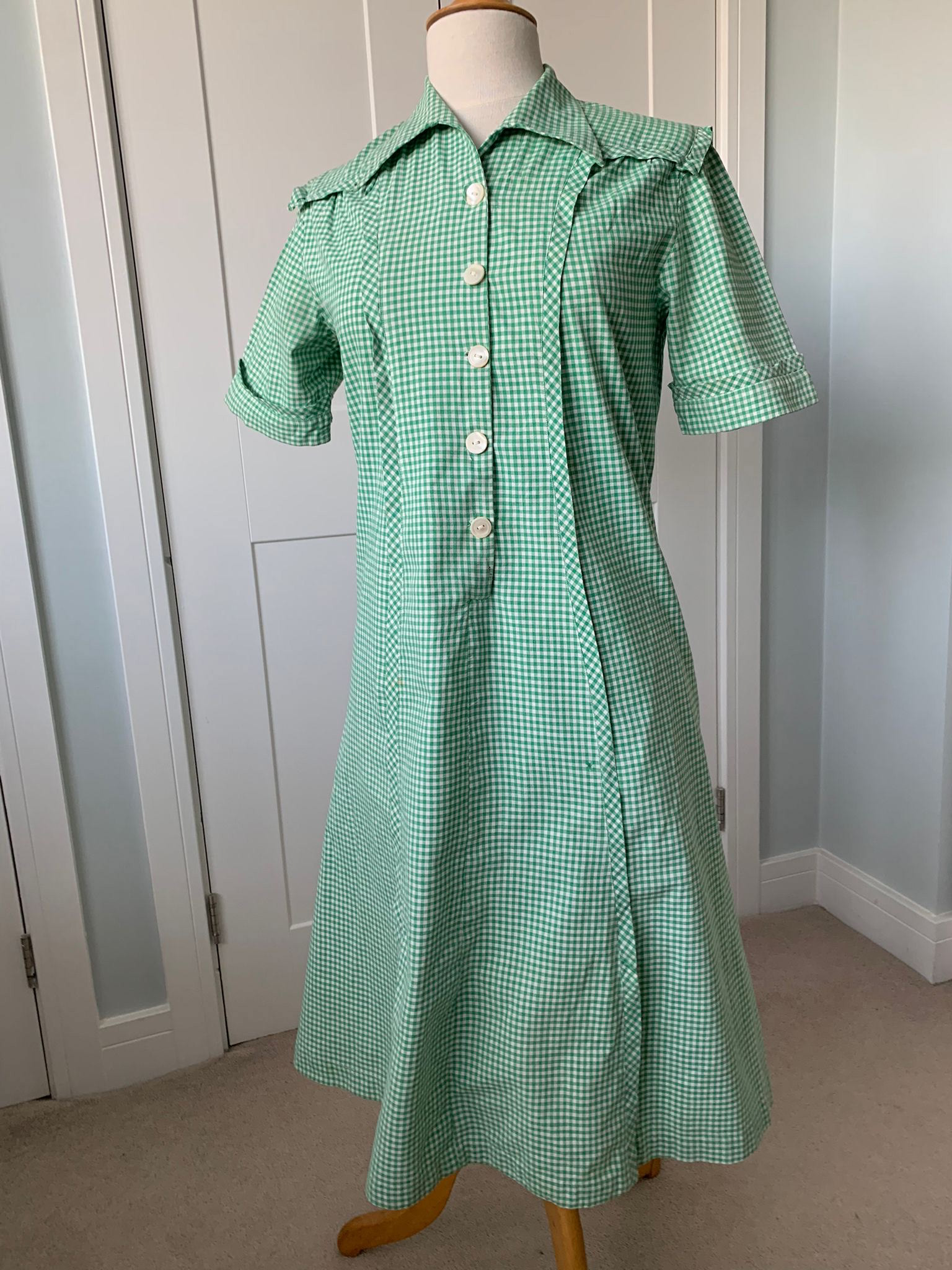
Uniform from course

Uniform from course
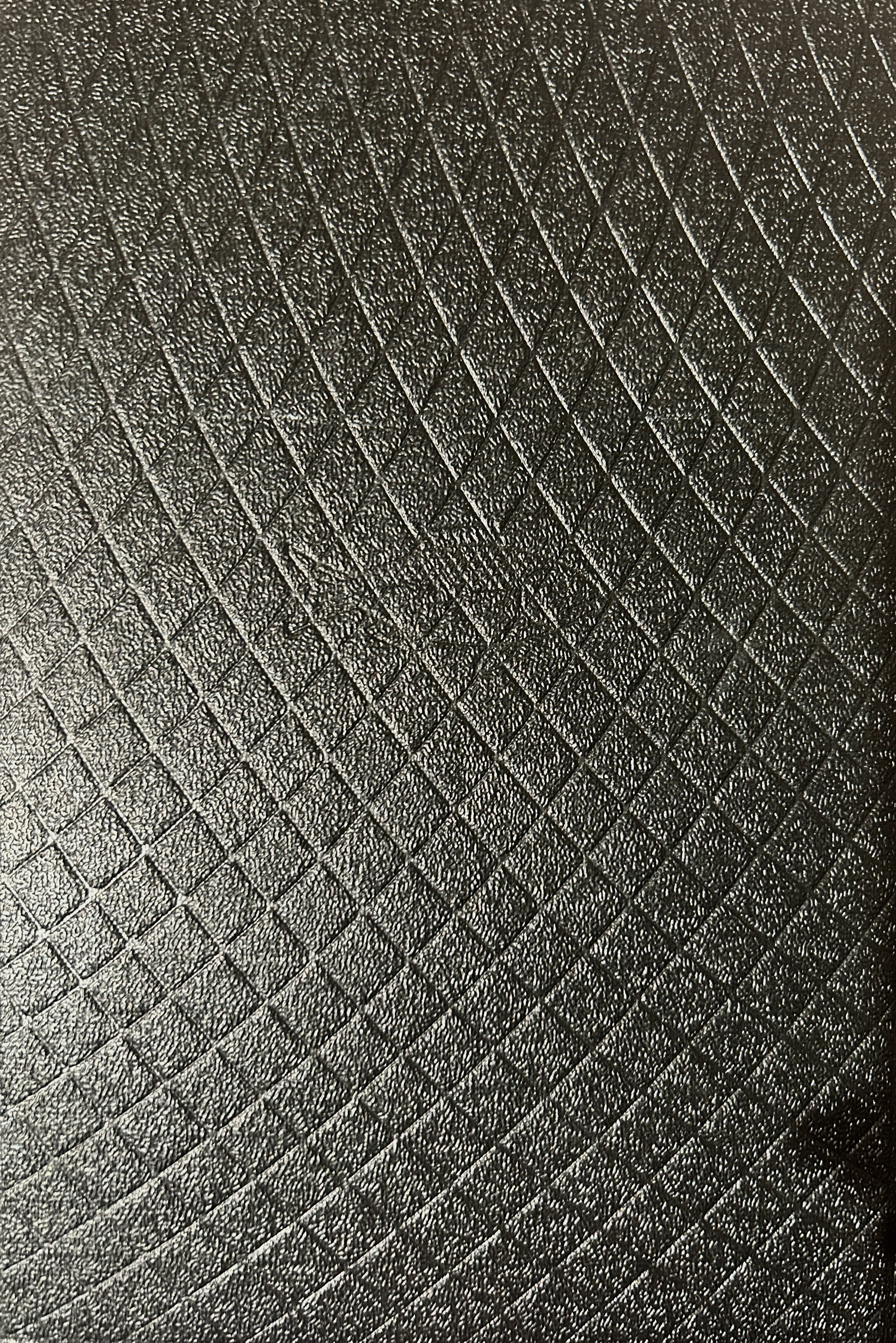
Bible from wedding
My final design features a set of two brooches, each representing and documenting the sentimental jewellery from my family. Both of these pieces will be made from silver, paired with enamel and a black onyx stone on the first brooch. I have chosen to use silver as the primary material, as it mirrors the original artefacts, adding another layer of documentation and connection to the pieces. In addition, using silver means that I will have started to use finer materials in my practice. As I would like to be a jeweller when I graduate, then I need to start using these materials as soon as possible and gain as much experience as possible.
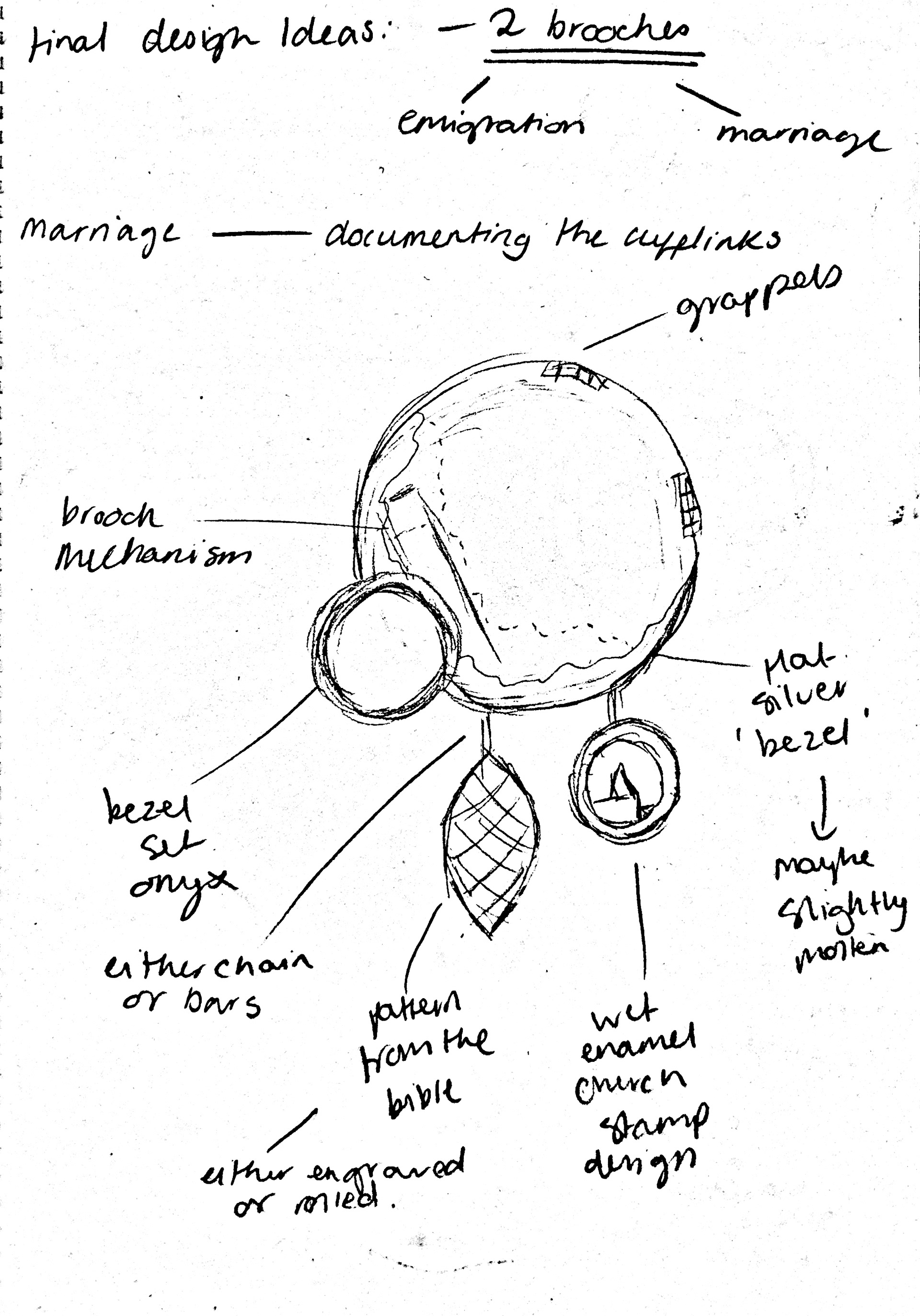
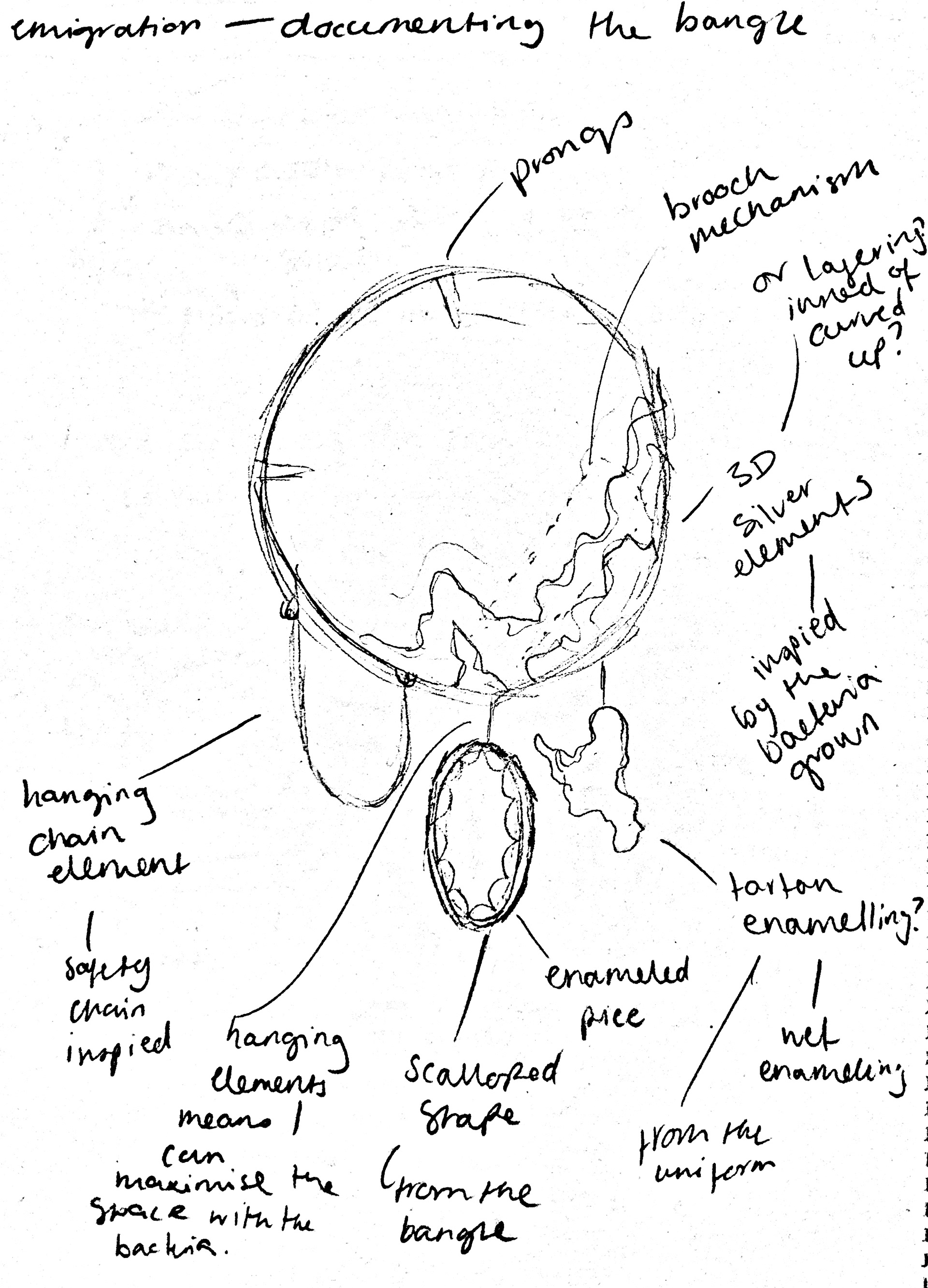
Crit Feedback
11th November 2024
During the group crit, I received valuable feedback on my cast brooch concept and suggestions for further development. The group agreed that the current setting wasn’t working visually and detracted from the focus of the bacterial growth. Although I had started to embrace showcasing the entire dish, I was essentially hiding it within the brass setting. I realised that I was concerned about not incorporating enough traditional jewellery techniques into my designs, which is why I instinctively reverted back to wax casting, a technique I have become confident with.
Geoff suggested a different approach: creating a sleek, technically refined setting that would frame the bacteria sample without overshadowing it. This would enhance the beauty of the bacterial colonies while giving the piece a polished, contemporary look.
To achieve this, I needed to design a custom silicone mould for my bacteria/resin that would allow the silver wire to wrap seamlessly around the sample. I thought about two different options: stacking three laser-cut disks or using CAD software like Rhino and Fusion 360 to design a disk. The advantage of using CAD was the ability to round the harsh edges of the mould, unlike the sharp edges from laser cutting, which could complicate demolding from the cold-curing silicone. Additionally, CAD would eliminate the issue of misalignment when stacking acrylic disks, as even a 1mm offset would be noticeable and compromise the design.
Moving forward, I plan to print several test samples using designs created in both Fusion 360 and Rhino. While I find Fusion easier to use, I was advised to work with Rhino instead, as it offers various jewellery-specific plug-ins that could benefit my practice throughout the remainder of my degree and provide valuable skills for post-graduation opportunities.
Mark Crit Feedback
14th November 2024
Since there was space in Mark's group crit session, he suggested I join in to receive the technical jewellery feedback I had hoped to get in our previously scheduled tutorial (which had to be cancelled). I presented my new setting concept using the 3D prints and wire, and we both agreed that this approach was a significant improvement, even if it involved using "robots." The design now had a more medical and industrial aesthetic, something I want to explore further in Synthesis and Resolution.
Mark suggested using magnets for the clasp mechanism. However, after speaking with the metal technicians, I couldn’t find a way to implement this while achieving a seamless, flush finish that would still be strong enough, without relying on glue—which I do not want to use.
He also recommended looking into the work of Christoph Zellweger for inspiration, particularly with the influence of medical themes in jewellery design. However, after looking through his work, I have decided to save this research for Synthesis and Resolution
Formative Review Feedback
15th November 2024
Following the formative review, we received video feedback along with grade boundaries. Since this feedback was a few weeks after the actual review, it allowed for feedback on more recent progress.
While I feel that my project now has a strong foundation, I need to focus on experimenting and testing the process for my personalised jewellery pieces. I’ve already begun 3D printing components to create custom silicone moulds, but I need to be mindful of time and dedicate more time to both the workshops and CAD.
Additionally, I also need to think about where this project is going to lead me, from potential development in Synthesis and Resolution or potentially into a business model with the capability to offer commissioned pieces.
With this feedback in mind, I can now concentrate on refining my designs. I aim to create custom materials rather than relying on pre-made components and to fully customise every element needed for my final pieces.
Patrícia Tutorial
25th November 2024
During my tutorial with Patrícia, I was advised that my final design seemed to be incorporating too many elements—ranging from enamelling to an overly complicated mechanism—which made it feel too busy. She suggested that I avoid including techniques simply for the sake of using them, a point I completely agreed with. I realised my design lacked cohesion and felt overly complicated. While it meant less of the background/context of what the jewellery symbolised to me, it meant that I could create something that looked cleaner and more contemporary, which was the overall goal of this project, and had the potential to set me up well for S&R.
Patrícia also suggested experimenting with bacteria to explore how different materials interact with bacterial growth. For example, inserting a steel pin directly into the agar while the bacteria grows could reveal how the material affects its environment, especially with steel's antimicrobial properties. While I felt that these were all fascinating ideas that I would love to explore, I did not have enough time to do these experiments justice within the time frame left in Unit X, so I have decided to save this for Synthesis and Resolution.
